June, 2025
now browsing by month
7 Benefits of Deep Tissue Massage for Sore Bodies (2025)
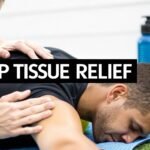
Beyond Relaxation: Unlocking Your Body's True Potential
When you hear 'massage,' you might picture gentle music and a light, relaxing touch. But what if a massage could do more than just soothe? What if it could fundamentally change how your body performs, recovers, and feels every single day? Deep tissue massage is a powerful therapeutic technique that goes far beyond surface-level relaxation. It is a targeted approach designed to address the root causes of chronic pain, muscle tightness, and athletic plateaus.
This isn't just about feeling good for an hour; it's about unlocking long-term benefits that enhance your overall well-being, from alleviating persistent back pain to shaving seconds off your personal best. One of the primary benefits of deep tissue massage is its ability to break up scar tissue and physically release chronic muscle knots or adhesions. These "knots" can disrupt circulation and cause pain, inflammation, and limited motion.
In this comprehensive guide, we will explore the seven most impactful benefits of deep tissue massage, providing actionable insights for athletes, desk workers, and anyone seeking to reclaim their body from chronic soreness and stress. We will move past generic advice and dive deep into the science, practical applications, and real-world results that make this therapy an essential tool for modern wellness and peak physical condition.
1. Chronic Pain Relief and Management
One of the primary benefits of deep tissue massage is its remarkable effectiveness in providing chronic pain relief and management. Unlike more gentle massage techniques that focus on relaxation, deep tissue massage targets the deeper layers of muscle and connective tissues, known as fascia. By applying firm pressure and slow, deliberate strokes, a therapist can break down rigid scar tissue and adhesions that often cause pain, limit movement, and restrict circulation. This targeted approach addresses the root cause of discomfort rather than just the surface-level symptoms.
This therapeutic method is particularly beneficial for those suffering from persistent conditions such as chronic lower back pain, fibromyalgia, and certain forms of arthritis. The process works by increasing blood flow to the affected areas, which delivers vital oxygen and nutrients while flushing out inflammatory waste products. This improves tissue health and reduces the chronic muscle tension that perpetuates the pain cycle.
The Impact on Chronic Conditions
The results from targeted deep tissue therapy can be profound. For example, individuals with chronic lower back pain often report a significant improvement in mobility and a decrease in pain intensity after just a series of 6-8 sessions. This is because the massage helps release the tight muscles in the lumbar region and hips that contribute to poor posture and discomfort. Similarly, fibromyalgia patients, who experience widespread musculoskeletal pain, have noted substantial relief. Studies and clinical reports often highlight a significant reduction in pain levels, sometimes as much as 40%, after a consistent treatment plan of around 10 sessions.
Visualizing the Data on Pain Reduction
The following infographic highlights key statistics that demonstrate the power of deep tissue massage for chronic pain management.
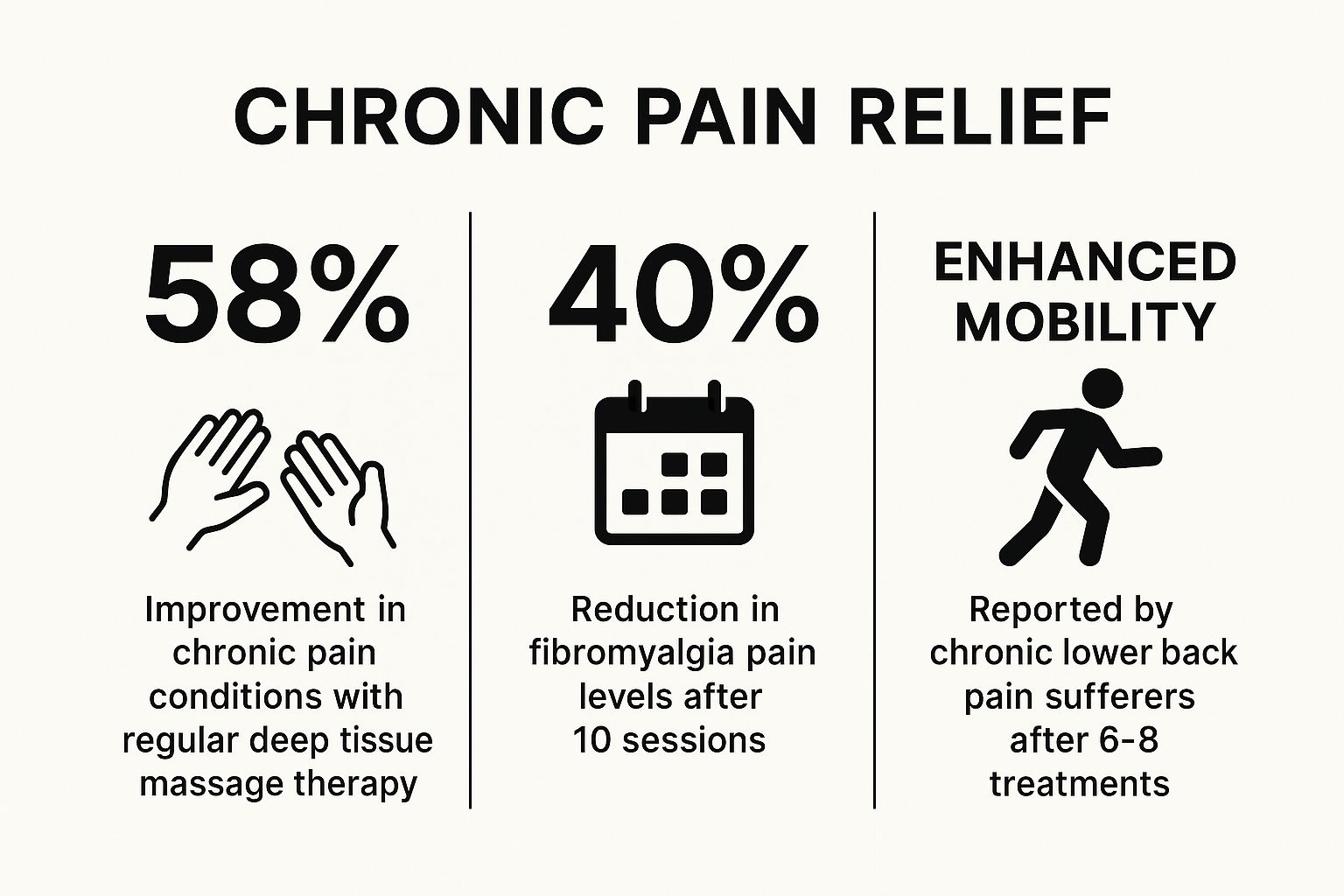
These figures underscore the significant, measurable improvements that patients can achieve, moving beyond temporary relief to gain lasting mobility and a better quality of life.
How to Maximize Your Results
To get the most out of your sessions, consider these practical tips:
- Communicate Openly: Your feedback is crucial. Use a 1-10 pain scale to tell your therapist when the pressure is too much or not enough. Effective deep tissue work is often intense but should not be excruciatingly painful.
- Hydrate Consistently: Drink plenty of water before and after your massage. Hydration helps your muscles process the metabolic waste released during the session and can reduce post-massage soreness.
- Maintain a Schedule: The benefits of deep tissue massage are cumulative. Work with your therapist to establish a consistent schedule, whether weekly or bi-weekly, to build on the progress from each session.
- Follow Post-Treatment Advice: Your therapist may recommend applying ice to particularly tender areas for 15-20 minutes to reduce inflammation and soreness after the session.
2. Enhanced Athletic Performance and Recovery
Another significant benefit of deep tissue massage is its ability to enhance athletic performance and accelerate recovery. For athletes and fitness enthusiasts, pushing the body to its limits is routine, but this intensity can lead to muscle tightness, microscopic tears, and the buildup of metabolic waste. Deep tissue massage directly counters these issues by applying targeted pressure that improves circulation and breaks down adhesions, ensuring muscles can function at their peak efficiency.
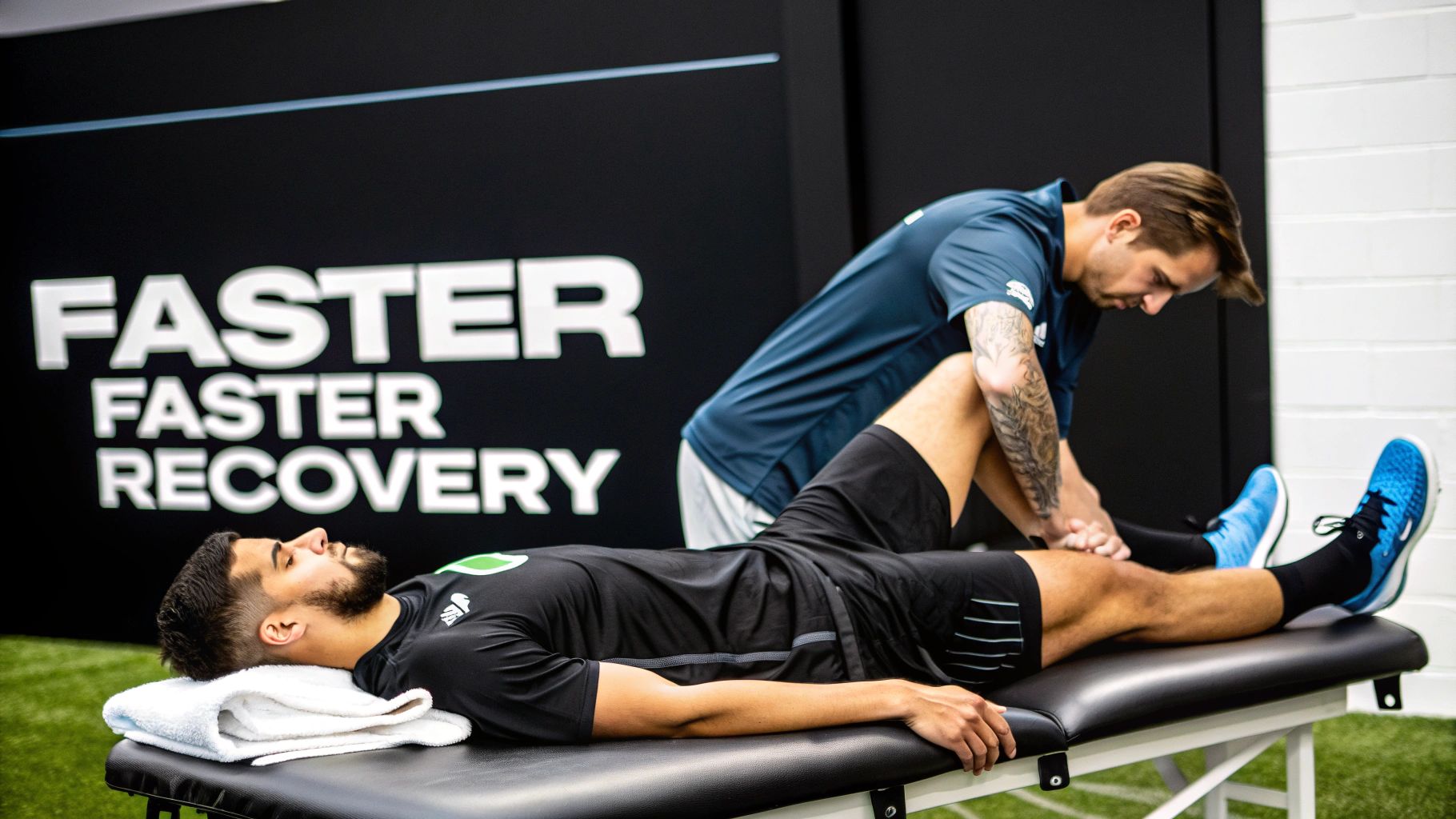
This therapeutic approach is more than just a recovery tool; it's a proactive strategy for performance optimization. By maintaining optimal muscle length and tension, the massage helps prevent the nagging, minor injuries that can derail a training schedule. Increased blood flow delivers oxygen-rich blood to tired muscles while flushing out substances like lactic acid, which contributes to soreness and fatigue. This process not only speeds up recovery but also enhances muscle flexibility and range of motion. For more insights on this, you can explore detailed guides on deep tissue massage for athletes.
The Impact on Athletic Disciplines
The real-world results of integrating deep tissue massage into a training regimen are compelling. For instance, some NFL teams have reported as much as a 23% reduction in soft tissue injuries after making regular massage therapy a core part of their players' recovery protocols. In the world of swimming, Olympic athletes have noted an 8% improvement in stroke efficiency by maintaining muscle pliability and reducing drag caused by tight lats and shoulders. Marathon runners have also seen substantial benefits, cutting their recovery time between strenuous training cycles by up to 30%, allowing for more consistent and effective preparation.
Visualizing the Data on Performance Gains
The following infographic highlights key statistics that demonstrate the power of deep tissue massage for athletic performance and recovery.

These figures illustrate how this therapy provides a competitive edge, transforming recovery from a passive wait into an active, strategic process.
How to Maximize Your Results
To leverage deep tissue massage for peak athletic performance, consider these practical tips:
- Time Your Sessions Strategically: Schedule your massages 48-72 hours before a major competition to allow your muscles time to recover from the deep work. For post-event recovery, a session within 24-48 hours can help mitigate soreness.
- Focus on Sport-Specific Muscles: Communicate with your therapist about your sport. A runner might need focus on hamstrings and hip flexors, while a tennis player may require attention on their shoulders and forearms.
- Combine with Active Recovery: Deep tissue massage is most effective when paired with other recovery methods. Integrate it with proper warm-up routines, dynamic stretching, and structured cool-downs.
- Track Your Performance: Monitor metrics like your speed, endurance, or flexibility over time. This data will help you and your therapist gauge the effectiveness of the treatment plan and make adjustments as needed.
3. Stress Reduction and Mental Health Improvement
Beyond addressing physical ailments, one of the most significant benefits of deep tissue massage is its powerful impact on stress reduction and mental health. This therapeutic technique works on a physiological level to recalibrate the body’s stress response. The firm, sustained pressure stimulates the release of oxytocin and serotonin, neurochemicals associated with happiness and well-being, while simultaneously reducing levels of the stress hormone cortisol. This biochemical shift helps transition the body from the "fight-or-flight" sympathetic nervous system to the "rest-and-digest" parasympathetic state, fostering a deep sense of calm.
This process offers more than just temporary relaxation; it actively combats the cumulative effects of chronic stress. By easing muscle tension where stress is physically held, such as the neck, shoulders, and back, deep tissue massage helps break the cycle of physical discomfort contributing to mental strain. The result is a profound improvement in mood, reduced anxiety, and a greater sense of emotional equilibrium that extends well beyond the massage table.
The Impact on Well-being
The mental health benefits are well-documented in various settings. For instance, corporate wellness programs incorporating regular deep tissue massage have reported notable decreases in employee stress levels, sometimes by as much as 35%. This not only improves individual well-being but also enhances overall job satisfaction and productivity. Similarly, students facing academic pressures have found that regular sessions help lower test anxiety and improve focus, allowing for better cognitive performance. These real-world applications demonstrate how targeted massage therapy can be a cornerstone of a proactive mental health strategy.
How to Maximize Your Results
To amplify the mental health benefits of your deep tissue massage, incorporate these strategies:
- Practice Mindful Breathing: During your session, focus on taking slow, deep breaths. This practice enhances the parasympathetic response, deepening your state of relaxation and amplifying the stress-reducing effects.
- Schedule Strategically: Book your massages during periods of high stress, such as before a major athletic competition, during a demanding work project, or amid personal challenges, to provide timely support.
- Create a Calm Transition: Avoid rushing to and from your appointment. Allow yourself 15 minutes before and after the session to sit quietly, perhaps with a cup of herbal tea, to ease into and out of the experience.
- Combine with Mindfulness: Pair your massage routine with other mindfulness practices like meditation or journaling. This synergy can help prolong the feelings of calm and provide you with better tools for emotional regulation.
4. Improved Blood Circulation and Cardiovascular Health
Beyond muscle relief, one of the significant benefits of deep tissue massage is its positive impact on blood circulation and overall cardiovascular health. This therapeutic technique works by manually stimulating blood flow through constricted and congested muscle tissues. The firm, consistent pressure helps to push stale blood out of tight areas, allowing fresh, oxygenated blood to rush in. This process not only delivers essential nutrients to muscles for repair but also enhances the body's ability to flush out metabolic byproducts like lactic acid.
This boost in circulation has a direct effect on the cardiovascular system. By easing muscle tension, the massage can lead to a reduction in both systolic and diastolic blood pressure. The relaxation response triggered during a session also helps lower heart rate and improve heart rate variability (HRV), a key indicator of cardiovascular resilience. This makes it a valuable complementary therapy for maintaining a healthy heart and circulatory system.
The Impact on Cardiovascular Conditions
The positive effects of enhanced circulation are especially noticeable in specific populations. For instance, hypertensive patients incorporating bi-weekly deep tissue massage into their wellness routine have reported reductions in blood pressure by as much as 15%. This is often attributed to the massage’s ability to reduce stress hormones and promote systemic relaxation. Similarly, individuals with diabetes, who often struggle with poor circulation in their extremities, may see improved blood flow in their hands and feet, which is crucial for tissue health and preventing complications. Post-surgical patients also benefit, as improved circulation can accelerate wound healing and reduce swelling.
Visualizing the Data on Circulatory Improvement
The following infographic highlights key statistics that demonstrate the power of deep tissue massage for improving blood circulation and cardiovascular health.
These figures illustrate how targeted massage therapy can produce measurable improvements in circulatory function, contributing to better long-term health outcomes.
How to Maximize Your Results
To leverage deep tissue massage for circulatory benefits, follow these practical recommendations:
- Consult Your Healthcare Provider: If you have a pre-existing cardiovascular condition, such as hypertension, heart disease, or a history of blood clots, it is essential to consult your doctor before starting deep tissue massage.
- Stay Well-Hydrated: Proper hydration is critical for supporting healthy blood volume and flow. Drinking water before and after your session helps your circulatory system function more efficiently.
- Move Slowly Post-Treatment: A temporary drop in blood pressure can sometimes occur after a massage. Get up slowly from the table to avoid dizziness or lightheadedness.
- Monitor Your Blood Pressure: If you have hypertension, consider monitoring your blood pressure at home to track the effects of regular massage therapy on your readings over time.
5. Posture Correction and Spinal Alignment
Another significant benefit of deep tissue massage is its powerful role in correcting poor posture and promoting better spinal alignment. In our modern, screen-focused world, postural problems are rampant, leading to chronic discomfort and musculoskeletal imbalances. Deep tissue massage directly addresses the root muscular causes of these issues by targeting the deep-seated tension that pulls the body out of its natural alignment. By applying focused pressure, a therapist can release overly tight muscles, such as the hip flexors, upper trapezius, and pecs, which often contribute to conditions like forward head posture and rounded shoulders.
This therapeutic approach works by breaking down adhesions and restoring length to shortened, contracted muscles while encouraging blood flow to weakened, overstretched muscles. This rebalancing effect allows the skeletal structure to return to a more optimal and ergonomic position. It’s a crucial intervention for anyone who spends long hours sitting at a desk, driving, or looking down at a phone, as it actively counters the negative physical adaptations that these habits create over time.
The Impact on Postural Deviations
The results of using deep tissue massage for postural correction can be transformative. For instance, office workers struggling with "tech neck" or forward head posture have reported visible improvements, with some studies indicating a reduction in forward head angle by as much as 25% after a series of 12 dedicated sessions. This is achieved by systematically releasing the tight suboccipital and levator scapulae muscles at the base of the skull and neck. Likewise, students and healthcare professionals, who are prone to developing spinal curvature issues from hunching over books or patients, have noted measurable improvements in their spinal alignment and a reduction in related back pain through regular treatment.
Visualizing the Data on Postural Improvement
The following infographic highlights key statistics that demonstrate the power of deep tissue massage for posture correction and spinal alignment.
These figures illustrate how targeted massage therapy offers more than just temporary relief; it provides a foundational strategy for long-term structural improvement and injury prevention.
How to Maximize Your Results
To achieve lasting postural changes, integrate these practices with your massage therapy:
- Combine with Ergonomics: Support your massage sessions by making ergonomic adjustments to your workspace. Ensure your monitor is at eye level, your chair supports your lumbar curve, and your keyboard is positioned to keep your wrists straight.
- Practice Postural Exercises: Your therapist can recommend specific stretches and strengthening exercises. Consistently performing these routines between sessions helps reinforce the work done on the massage table and re-educates your muscles.
- Set Posture Reminders: Use an app or a simple timer to remind yourself to check and correct your posture every hour. A quick shoulder roll and chin tuck can prevent you from lapsing back into poor habits.
- Strengthen Your Core: A strong core is the foundation of good posture. Incorporate exercises like planks, bird-dog, and bridges into your fitness routine to provide better support for your spine.
6. Enhanced Flexibility and Range of Motion
Another one of the key benefits of deep tissue massage is its ability to significantly enhance flexibility and range of motion. Over time, physical activity, injuries, and even prolonged sitting can cause adhesions, which are bands of painful, rigid tissue, to form in muscles, tendons, and ligaments. These adhesions restrict movement and make muscle fibers stick together, limiting their ability to stretch and contract fully. Deep tissue massage mechanically breaks down these adhesions by applying targeted, sustained pressure.
This process allows the muscle fibers and surrounding fascia to move more freely, increasing tissue elasticity and extensibility. The firm pressure also increases circulation and tissue temperature, which helps the muscles relax and become more pliable. By addressing these underlying restrictions, deep tissue massage doesn't just provide a temporary feeling of looseness; it creates lasting improvements in how your body can move.
The Impact on Mobility and Performance
The results of improved flexibility can be transformative for both athletic performance and daily life. For instance, dancers and gymnasts have reported dramatic gains, with some achieving as much as a 20% improvement in key movements like an arabesque or split after a consistent series of eight sessions. Similarly, golfers can benefit from increased rotational mobility, with some gaining up to 15 degrees more in their shoulder turn, leading to a more powerful and fluid swing. For seniors, enhanced hip and spine flexibility can be crucial for maintaining independence and preventing falls.
A Visual Guide to Improving Flexibility
This video demonstrates some of the techniques used during a session to target areas that commonly restrict range of motion, offering a glimpse into how a therapist works to release tight muscles.
As you can see, the targeted approach is essential for releasing specific points of tension that limit overall movement. This is particularly relevant for athletes like runners, who depend on hip and leg flexibility for an efficient stride. For more information, you can learn more about how massage benefits runners on blog.lamoondayspa.com.
How to Maximize Your Results
To make the most of the flexibility gains from your massage, incorporate these habits into your routine:
- Stretch Post-Massage: Perform gentle, dynamic stretches within 24 hours of your session. Your muscles will be more pliable and receptive to stretching, helping to lock in the newfound range of motion.
- Stay Active: Regular, gentle movement between sessions prevents muscles from tightening up again. Activities like walking, yoga, or swimming are excellent for maintaining gains.
- Communicate Target Areas: Before your session begins, tell your therapist about specific areas where you feel tight or restricted. This allows them to focus their efforts where you need them most.
- Warm-Up Effectively: Always warm up your muscles with light cardio for 5-10 minutes before engaging in strenuous activity or deep stretching. This prepares the tissue and reduces the risk of injury.
7. Injury Prevention and Rehabilitation
One of the most critical benefits of deep tissue massage is its dual role in both preventing injuries and accelerating rehabilitation. It functions as a powerful tool for maintaining musculoskeletal health by addressing potential issues before they become serious problems. By targeting deep-seated muscle imbalances and adhesions, a therapist can improve tissue elasticity and joint mobility, which are fundamental for preventing strains, sprains, and other common injuries, especially for active individuals.
This therapeutic approach is invaluable for rehabilitation following an injury. Deep tissue techniques help break down restrictive scar tissue that forms during the healing process, ensuring that new tissue fibers align correctly. This promotes a more complete and functional recovery, restoring strength and range of motion while reducing the likelihood of re-injury. The massage increases circulation to the damaged area, delivering essential nutrients and oxygen needed for optimal tissue repair.
The Impact on Prevention and Recovery
The real-world applications of deep tissue massage for injury management are significant. For instance, some corporate wellness programs for physically demanding jobs, like construction, have seen a reduction in workplace injuries by as much as 45% after implementing preventive massage therapy. In the sports world, athletes like tennis players recovering from shoulder injuries have been reported to return to play up to 30% faster when deep tissue massage is integrated into their physical therapy regimen. Runners can also proactively prevent common ailments like IT band syndrome by receiving regular deep tissue work on their hips and glutes to release chronic tightness.
These examples highlight how deep tissue massage is not just a reactive treatment but a proactive strategy for maintaining long-term physical health and performance. This is why it has become a staple in sports medicine clinics, rehabilitation hospitals, and physical therapy centers worldwide. To explore a related modality often used in this context, you can learn more about the benefits of sports massage on lamoondayspa.com.
How to Maximize Your Results
To effectively use deep tissue massage for injury prevention and rehabilitation, follow these guidelines:
- Be Proactive: Don't wait for pain to become severe. Schedule sessions regularly to address minor imbalances before they escalate into full-blown injuries.
- Communicate Your History: Clearly inform your therapist about any past injuries, surgeries, or chronic conditions. This allows them to tailor the treatment safely and effectively.
- Combine with Exercise: Integrate your massage therapy with a balanced routine of strengthening and stretching exercises recommended by a physical therapist or coach to support the corrected muscle patterns.
- Follow Activity Recommendations: Your therapist may advise you to rest or perform specific gentle movements after a session. Adhering to this advice is crucial for allowing your body to heal and adapt properly.
Benefits Comparison of 7 Deep Tissue Massage Effects
| Benefit Area | Implementation Complexity 🔄 | Resource Requirements ⚡ | Expected Outcomes 📊 | Ideal Use Cases 💡 | Key Advantages ⭐ |
|---|---|---|---|---|---|
| Chronic Pain Relief and Management | Moderate – multiple sessions needed | Moderate – skilled therapists | Long-lasting pain relief, 58%+ improvement | Chronic pain conditions like fibromyalgia, arthritis, chronic back pain | Reduces medication dependence, addresses root causes |
| Enhanced Athletic Performance and Recovery | High – timing and skill critical | High – frequent sessions, expert therapists | Faster recovery, reduced injuries, improved power/endurance | Professional athletes, fitness enthusiasts | Accelerates lactic acid removal, prevents overuse injuries |
| Stress Reduction and Mental Health Improvement | Low to moderate – regular commitment | Moderate – continual sessions | Reduced cortisol (-30%), increased serotonin (+28%), improved mood | Stress management, anxiety relief, workplace wellness | Natural alternative to meds, improves emotional regulation |
| Improved Blood Circulation and Cardiovascular Health | Moderate – requires medical clearance | Moderate – specialized therapists | Increased blood flow (+40-50%), reduced blood pressure (-10-15 mmHg) | Cardiovascular health, hypertension management | Supports heart health, aids tissue repair |
| Posture Correction and Spinal Alignment | Moderate – requires consistency | Moderate – combined treatments often needed | Reduced neck/back pain, improved body awareness | Office workers, prolonged sitting, postural imbalances | Prevents degenerative spinal changes, enhances breathing |
| Enhanced Flexibility and Range of Motion | Moderate – needs regular maintenance | Moderate – therapist and active participation | Improved joint mobility, muscle elasticity | Aging populations, dancers, athletes seeking mobility | Reduces injury risk, maintains mobility with age |
| Injury Prevention and Rehabilitation | High – coordination with healthcare providers | High – expert therapists, integrated care | Reduced injury recurrence, faster recovery | Athletes, physically active individuals, injury recovery | Addresses compensatory patterns, cost-effective prevention |
Integrate Deep Tissue Massage Into Your Wellness Routine
As we've journeyed through the multifaceted world of deep tissue massage, it's clear that its impact extends far beyond a simple moment of relaxation. The benefits of deep tissue massage are not just about temporary relief; they represent a powerful, strategic approach to long-term health, physical resilience, and mental clarity. From providing targeted relief for chronic pain and accelerating athletic recovery to actively reducing stress hormones and correcting postural imbalances, this therapeutic modality is a cornerstone of a comprehensive wellness plan.
The true value is unlocked when you shift your perspective from viewing it as a reactive treatment for pain to seeing it as a proactive investment in your body’s future. Think of it as essential maintenance for your body's complex machinery. Just as an athlete fine-tunes their equipment, regular deep tissue work fine-tunes your musculoskeletal system, ensuring it operates with peak efficiency and is less prone to breakdown.
Key Takeaways and Your Path Forward
Let's distill the core advantages we've covered into actionable insights:
- For Chronic Pain Sufferers: Regular sessions can break the cycle of tension and inflammation that fuels conditions like fibromyalgia, sciatica, and lower back pain. Your next step is to schedule consistently, not just when pain flares up, to manage and reduce baseline pain levels.
- For Athletes and Fitness Enthusiasts: Deep tissue massage is your competitive edge. It enhances recovery, improves flexibility, and crucially, helps prevent the injuries that can derail your progress. Implement it into your training cycles, especially after intense workouts or before major competitions.
- For Desk Workers and Sedentary Individuals: This is your antidote to the "tech neck" and rounded shoulders that come from hours of sitting. It actively works to release shortened, tight muscles in the chest and neck while helping to realign the spine for better posture and reduced strain.
- For Anyone Seeking Mental Calm: The physiological effects of reducing cortisol and increasing oxytocin are profound. It's a tangible way to combat the physical manifestations of stress and anxiety, leading to improved mood and better sleep.
Making It a Consistent Practice
The ultimate takeaway is this: consistency is paramount. A single massage can provide noticeable relief, but a sustained regimen creates transformative, lasting change. Your next step should be to move beyond sporadic appointments and establish a regular schedule. Start with a session every two to four weeks and adjust based on your body's response, your activity level, and your specific goals. Communicate openly with your therapist about your progress, any new areas of concern, and what techniques feel most effective. This partnership is vital for customizing your treatment and maximizing the incredible benefits of deep tissue massage. By embracing this practice as an integral part of your self-care routine, you are making a profound commitment to a more mobile, pain-free, and resilient life.
Ready to experience these transformative benefits firsthand? The expert therapists at La Moon Massage and Facial specialize in creating personalized deep tissue treatments that address your unique needs, helping you move better, recover faster, and live with renewed vitality. Book your session today at La Moon Massage and Facial and take the first step toward a stronger, healthier you.
Deep Tissue Massage for Athletes: Speed Up Your Recovery
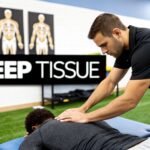
Why Your Athletic Body Needs a Different Massage Approach
An athlete's body is like a high-performance engine, constantly running at its limits and enduring stress that a standard passenger car never would. While a relaxing spa massage might feel like a gentle car wash, it doesn't provide the specialized maintenance an athlete's system needs. The constant strain, explosive movements, and sheer volume of training create unique patterns of tension and micro-trauma that a general massage simply can't resolve. This is why a targeted deep tissue massage for athletes is not a luxury, but a vital part of any serious training plan.
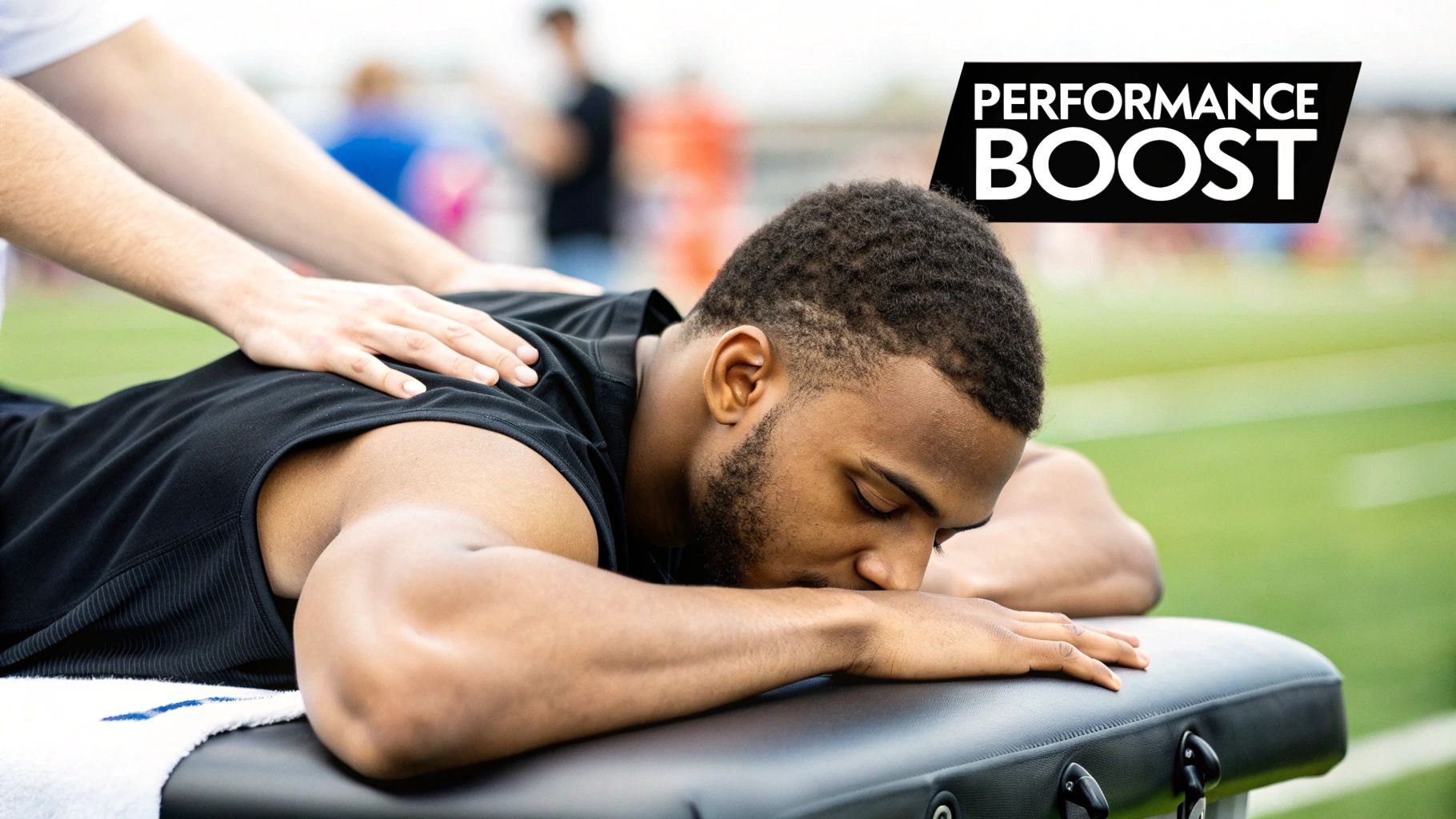
From General Relaxation to Targeted Repair
A standard Swedish massage uses broad, gliding strokes designed for overall relaxation and better circulation in the surface layers of muscle. It’s great for de-stressing, but for an athlete, the real problems often lie much deeper. Years of training build up dense muscle fibers and tough connective tissue, known as fascia. This tissue can develop adhesions and knots—think of them as tiny traffic jams on your body's muscular highways—that restrict movement, block blood flow, and can lead to chronic pain or injury.
A deep tissue massage for athletes gets past the surface to address these deeper issues directly. It uses slow, deliberate strokes and firm pressure to break down these adhesions, restoring proper function and mobility. This isn't about general wellness; it’s about specific, mechanical problem-solving for a body that's been pushed to its peak. For a closer look at how this supports athletic performance, you can check out our guide on sports massage therapy as a recovery game-changer.
The Athlete's Stamp of Approval
There's a reason why the athletic community so strongly supports this type of bodywork. It's not just based on feelings; surveys reveal that over 90% of athletes view methods like deep tissue massage as essential for fixing muscle problems and preventing injuries. This belief is supported by clear benefits, including reduced muscle tension, improved soft tissue function, and a noticeable increase in range of motion.
It serves as both a preventative measure and a powerful recovery tool. To learn more about the science behind these benefits, you can explore the research on massage therapy effectiveness. Ultimately, choosing a deep tissue approach is a strategic decision that acknowledges a high-performance body requires a high-performance maintenance plan.
The Hard Science Behind Athletic Recovery Claims
While athlete testimonials are powerful, it's important to look past anecdotes and see what science says about a deep tissue massage for athletes. The physical effects are real, but they might not be what you assume. Instead of a magic wand that boosts performance, think of massage as a precision tool for managing the fallout from intense training.
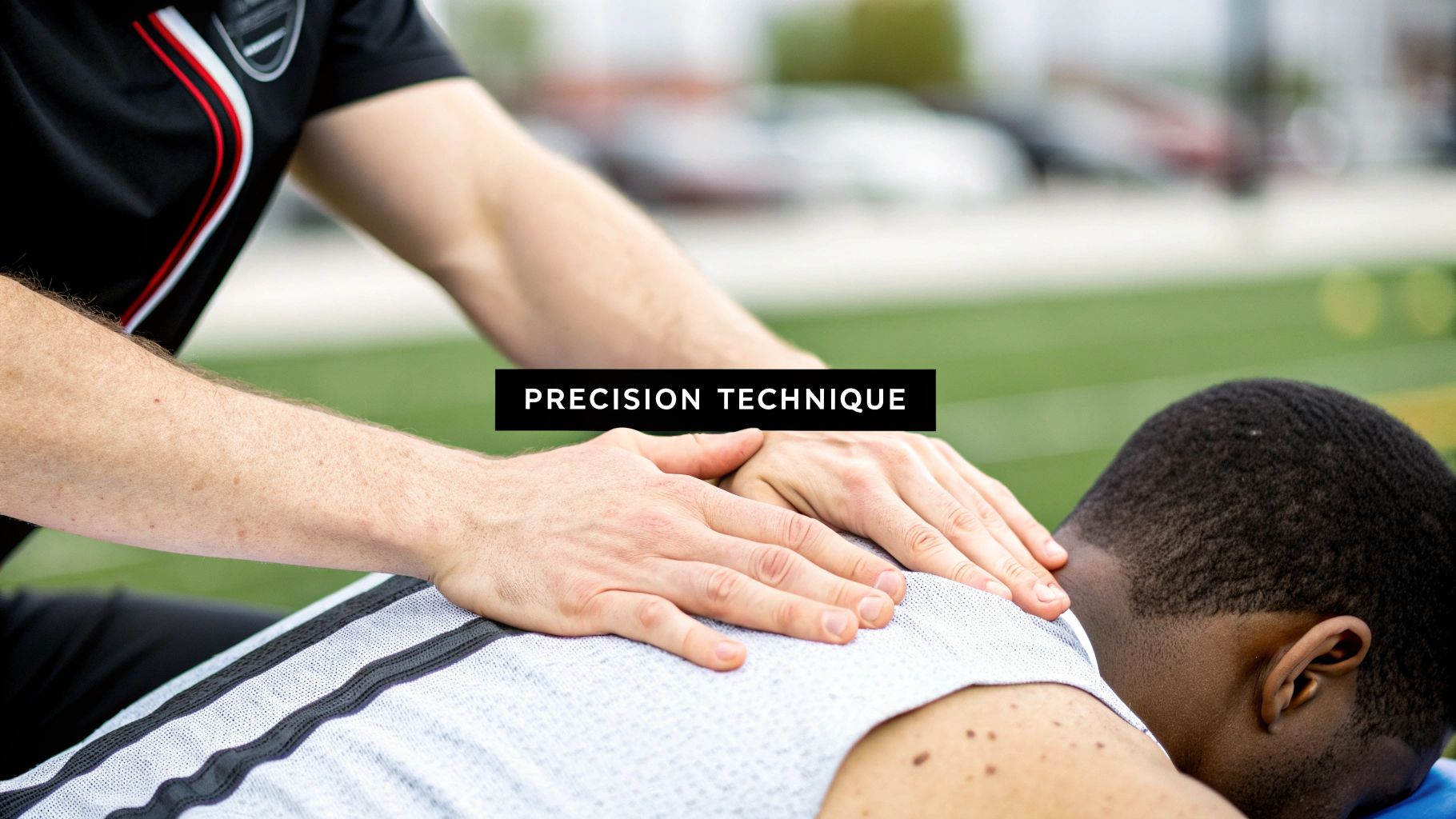
Separating Fact from Hype
The most common claims are tied to better performance and quicker recovery. So, what does the evidence actually show? A large 2020 meta-analysis, which pooled the results from 29 studies involving over 1,000 athletes, offers some clear answers. It found that massage didn't directly improve performance metrics like strength or speed.
However, it did reveal small but significant gains in flexibility and a notable reduction in delayed onset muscle soreness (DOMS) by about 13%. This difference is critical: massage shines in recovery management, not as a direct performance enhancer. You can dive into the full results of this comprehensive sports massage review to learn more.
What’s Happening Inside Your Muscles?
When a therapist applies focused pressure, several key things happen on a cellular level that directly aid your recovery.
- Improved Circulation: The physical pressure on muscle tissue helps get blood moving. This brings fresh, oxygen-rich blood to tired muscles and helps clear out metabolic waste from hard exercise. Imagine it as clearing a logjam in a river, allowing vital supplies to flow freely.
- Fascial Release: Athletes often develop tough, dense connective tissue called fascia. Deep tissue techniques work to break down adhesions in these layers, helping to restore elasticity. This release can improve your range of motion and reduce that feeling of tightness.
- Neurological Response: The intense pressure sends signals to your central nervous system that can help "reset" muscles that are stuck in a state of tension. This is a key part of breaking the cycle of chronic muscle guarding that can lead to imbalances and injury.
Understanding these mechanisms helps set the right expectations. While one massage won't make you faster overnight, consistent deep tissue work can dramatically improve how well your body handles a heavy training schedule. This is one of the main benefits of sports massage that dedicated athletes count on. By prioritizing recovery and tissue health, you build a stronger foundation for consistent, long-term performance.
Mastering the Techniques That Actually Work for Athletes
A common myth is that a deep tissue massage for athletes is just a standard massage with extra force. The reality is quite different. It’s a specialized discipline that requires a deep knowledge of how an athlete's body responds to intense physical strain. A productive session isn't about gritting your teeth through pain; it's about applying specific techniques to resolve issues within the muscle and its surrounding connective tissues.
The infographic below outlines the essential steps for preparing for your session, which helps ensure your body is receptive and you get the most out of the treatment.
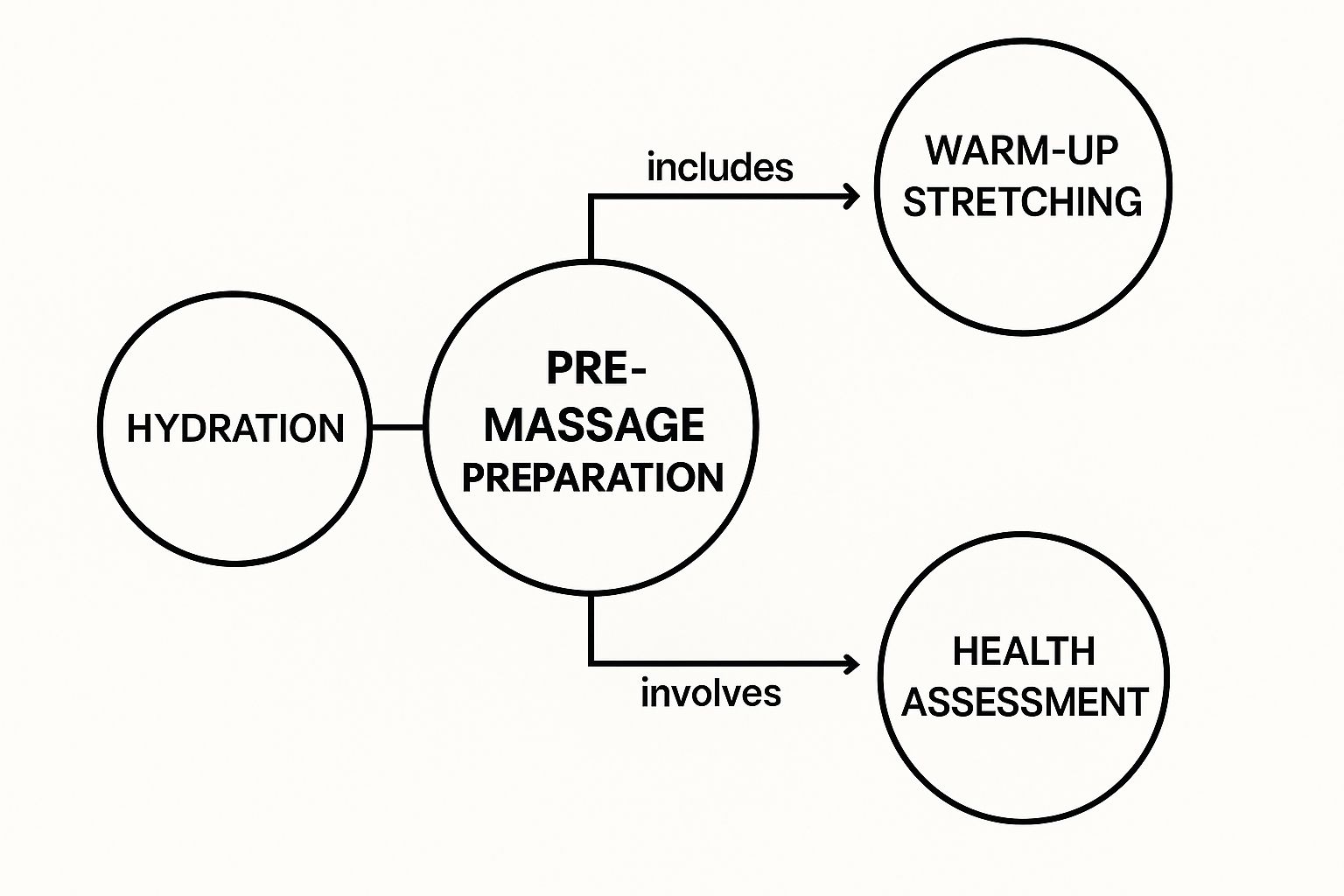
As this guide shows, simple actions like hydrating properly, warming up the muscles, and discussing your health history are the foundation for a successful massage.
Core Techniques for Athletic Recovery
A therapist skilled in sports massage will draw from a toolbox of methods, applying them based on your specific needs. Instead of a one-size-fits-all approach, they will shift between techniques to address different types of tension and restriction as they discover them.
To help you communicate your needs more effectively to your therapist, it's useful to understand the core techniques they might use. The table below details some of the most common methods and their specific benefits for athletes.
Deep Tissue Massage Techniques by Athletic Need
Comparison of massage techniques and their specific applications for different athletic requirements and muscle groups
| Technique | Target Area | Best For | Pressure Level | Session Duration |
|---|---|---|---|---|
| Trigger Point Release | Specific "knots" or hyper-irritable spots in muscles like the upper back, glutes, or calves. | Relieving stubborn, focused pain that may radiate to other areas and restoring normal muscle function. | Intense, sustained pressure directly on the knot. | 15-30 minutes per area |
| Myofascial Stretching | The fascia, or the web-like connective tissue that surrounds all your muscles. Common areas are IT bands and forearms. | Improving overall flexibility, releasing broad areas of tension, and correcting postural imbalances caused by tight fascia. | Slow, gentle, and sustained pressure. | 20-40 minutes per region |
| Cross-Fiber Friction | Tendons and ligaments, especially around joints where scar tissue from old injuries has formed. | Breaking down adhesions and scar tissue from chronic issues like tendinitis, and promoting healthier alignment of healing tissue fibers. | Short, deep, perpendicular strokes across the muscle fibers. | 10-20 minutes per injury site |
These techniques represent the core of an effective deep tissue massage for athletes. A therapist can improve your mobility, speed up recovery, and lower your risk of future injuries by concentrating on these particular muscular and fascial restrictions. This focused work is what makes therapeutic bodywork a world apart from a general relaxation massage.
Building Your Strategic Massage Schedule
Timing is everything when you want to work a deep tissue massage for athletes into a demanding training schedule. Getting a massage only "when you feel sore" is like refueling a race car mid-lap—it's a reaction, not a strategy. A well-planned schedule makes massage a calculated part of your performance and recovery system, designed for your sport, training phase, and body. Remember, more isn't always better; the goal is consistency and smart application.
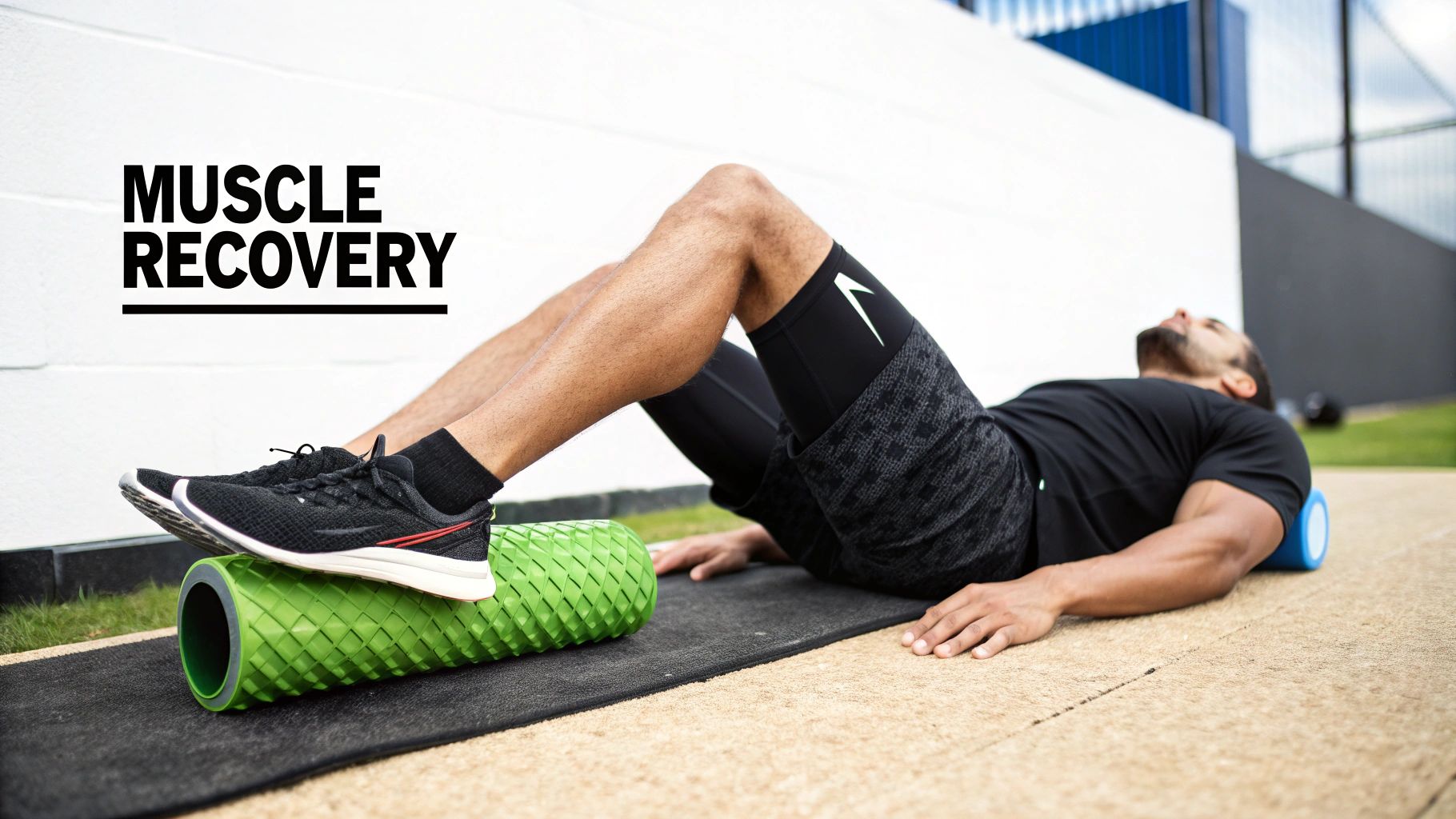
Syncing Massage with Your Training Cycles
Your massage needs will shift depending on where you are in your season. Applying the same frequency year-round is not just inefficient—it can hold you back. Instead, try syncing your sessions with your training blocks:
- Off-Season/Base Building: This is the perfect time for more frequent, intensive work. Sessions every 1-2 weeks can tackle chronic issues, break down old scar tissue, and improve your fundamental mobility before the training load increases.
- In-Season/Maintenance: During your competitive season, the focus changes to recovery and upkeep. The goal is not deep corrective work that might cause soreness. A session every 2-4 weeks is often enough to manage muscle tension and help recovery without disrupting your training.
- Pre-Competition: It's best to avoid a deep, intense massage within 48-72 hours of a big event. This can leave your muscles feeling tired or heavy. A lighter, "flush-out" session is a much better choice to invigorate tissues.
- Post-Competition/Recovery: Scheduling a session 24-48 hours after a major event can significantly boost your recovery. It works by improving circulation and easing the acute tension that builds up during competition.
Finding the Right Frequency for You
So, what’s the magic number for how often you should get a massage? Research consistently shows that a regular, structured approach is most effective. One recent trial discovered that athletes who received bi-weekly 40-minute deep tissue massages over eight weeks reported major improvements in both muscle recovery and performance. This highlights that consistent application is where the real results are found. You can read the full research about these massage frequency findings to see the data for yourself.
Ultimately, your ideal schedule comes down to your sport, budget, and how your body responds. For instance, endurance athletes like runners might need more frequent work on their lower body. Our dedicated guide on sports massage for runners offers more specific advice on this. A good starting point is once a month, which you can adjust based on your training intensity and recovery. Track your performance and soreness levels to discover the perfect cadence that keeps you at the top of your game.
Getting Ready for Maximum Session Benefits
Maximizing the value of a deep tissue massage for athletes begins long before you arrive for your appointment. Just as you prepare for a demanding workout, a little prep for your massage can ensure your muscles are ready for treatment and the therapist can work more effectively. This isn't just about showing up; it's about taking strategic steps to amplify your results.
Think of smart preparation as priming a canvas before an artist starts painting—it creates the perfect surface for detailed, effective work. Without it, your therapist might spend precious time just working through superficial tension.
Your Pre-Session Checklist
To truly get the most out of your massage, focus on a few key areas in the hours leading up to it. These straightforward actions can make a huge difference in your comfort and the session's overall impact.
- Hydrate Strategically: Well-hydrated muscle tissue is more flexible and less likely to cramp under pressure. Drink plenty of water the day before and on the day of your massage. However, it's wise to taper off about an hour beforehand to avoid needing a break mid-session.
- Time Your Meal: Avoid eating a large meal within 90 minutes of your massage. While a light, easy-to-digest snack is perfectly fine, a full stomach can lead to discomfort, especially when you are lying face down on the table.
- Warm Up Your Tissues: A warm shower or a few minutes of light stretching before you head to your appointment can help your muscles begin to relax. This initial loosening allows your therapist to access deeper tissue layers more quickly and with less discomfort for you.
Communication Is Key
The most critical part of your preparation is communication. Your therapist isn't a mind reader, so arriving a few minutes early to discuss your session goals is essential. Be specific about your recent training, point out any areas of pain or tightness, and be clear about what you want to achieve.
Tell them about your latest long run, a tough day of lifting, or that nagging ache in your shoulder. This context helps them tailor the deep tissue massage for athletes to your exact needs, turning a generic session into a targeted treatment. Remember, effective therapy is a partnership built on clear dialogue and shared goals. The more information you share, the better your therapist can address the root causes of your discomfort and help you reach your recovery objectives.
Maximizing Recovery After Your Session
The benefits of a productive deep tissue massage for athletes don't stop when you get off the table. What you do in the following 24 to 48 hours is just as crucial as the session itself. Think of it like this: your massage therapist has done the heavy lifting, breaking down adhesions and releasing tight muscles. Now, it's your job to clear out the "metabolic debris" and allow those tissues to heal properly.
Your actions during this critical window can either solidify the gains you've made or accidentally undermine them. Proper aftercare is key to managing the expected soreness and ensuring your muscles recover fully, ready for the next challenge. This tenderness is a normal response, much like the delayed onset muscle soreness (DOMS) you feel after a demanding workout. It's a sign that deep, restorative work has occurred.
Your Post-Massage Recovery Timeline
To get the most value from your massage, a structured approach to recovery works best. This helps your body flush out metabolic byproducts released from the muscle tissue and supports the healing process. The goal is to move from a state of repair to a state of enhanced performance.
Below is a simple timeline that breaks down what to do and what to expect in the hours and days after your session. It’s designed to guide you through the recovery process safely and effectively.
Post-Massage Recovery Timeline and Actions
This hour-by-hour guide shows optimal recovery actions and what to expect after deep tissue massage sessions.
| Time Frame | Recommended Actions | What to Expect | Warning Signs |
|---|---|---|---|
| 0-4 Hours Post-Massage | Hydrate immediately with water or an electrolyte drink. Perform very gentle, dynamic stretches like slow arm circles or leg swings. | A feeling of deep relaxation, maybe some lightheadedness or grogginess. | Sharp or shooting pains, persistent dizziness, or extreme fatigue that feels unusual. |
| 4-24 Hours Post-Massage | Continue hydrating. A warm Epsom salt bath can work wonders for muscle soreness. Avoid strenuous exercise, alcohol, and caffeine. Light activity like walking is ideal. | Mild to moderate muscle soreness, similar to the ache after a good workout. The areas your therapist focused on may feel tender. | Severe pain that restricts your normal movement, significant swelling or bruising, or any flu-like symptoms. |
| 24-48 Hours Post-Massage | Reintroduce light to moderate exercise. Continue with gentle stretching and foam rolling. Listen to your body and avoid pushing through any sharp pain. | Soreness should be noticeably better. You might feel an increased range of motion and less muscle tension. | Any pain that gets worse instead of better, or soreness that continues for more than 72 hours. |
Following these steps helps ensure your investment in a deep tissue massage for athletes truly pays off. By focusing on smart hydration, gentle movement, and intelligent training adjustments, you can turn a single session into a powerful boost for your long-term recovery and performance.
If you ever feel that your soreness is excessive or lasts longer than three days, be sure to let your therapist know. This feedback allows them to adjust the pressure and techniques in future sessions to better suit your body's needs.
Your Complete Deep Tissue Massage Action Plan
Now it’s time to put all the pieces together. Let’s build a smart, personalized strategy that fits your athletic goals, your training schedule, and your real life. Think of deep tissue massage for athletes not as a one-time fix but as a consistent part of your routine. This action plan will walk you through creating that system, from finding the right therapist to tracking your results.
Finding a Qualified Sports-Focused Therapist
This is the most critical step. You need a therapist who truly understands the specific stresses that athletic training puts on a body. Not all massage therapists are prepared to deliver the targeted work required for peak performance and recovery.
- Look for Credentials: Search for therapists with certifications in sports massage or neuromuscular therapy. These specializations mean they've undergone advanced training in anatomy, how the body moves (kinesiology), and managing injuries.
- Ask About Their Experience: A key question is, "Have you worked with athletes in my sport?" A therapist who helps runners will have different insights and techniques than one who primarily works with powerlifters. Their specific experience matters.
- Conduct an Interview: Don't be shy about scheduling a short consultation call. Ask about their philosophy on deep tissue work, how they manage pressure, and how they ensure open communication during a session. A great therapist will treat the session as a partnership.
Establishing Clear Goals and Communication
Once you have a therapist, the next step is to build a strong working relationship. A massage session shouldn't be a passive event where you just lie there; it's a team effort.
Before each appointment, have a quick chat about your recent training. Mention any specific areas of soreness, tightness, or pain. Be clear about your goals for that day's session. Most importantly, be honest about pressure. Effective deep tissue work is intense, but it should never be agonizing. A pressure level of 7 or 8 on a 10-point scale is often the ideal zone for getting results without causing damage.
Measuring Success and Adjusting Your Plan
How do you actually know if your massage plan is paying off? You need to track your progress. While feeling less sore is a great sign, adding some objective measurements will give you a clearer picture.
Start monitoring key indicators like your range of motion in tight areas (how far can you stretch?), how quickly you bounce back from tough workouts, and even your sleep quality. If you see steady improvements in these areas, you're on the right track. If you hit a plateau, it might be time to tweak the frequency of your massages or talk to your therapist about trying a different approach. Remember, a deep tissue massage for athletes is a dynamic tool. Your plan needs to be flexible enough to change with your training cycles, whether you're in the off-season or peak competition season.
Ready to integrate professional massage therapy into your training? At La Moon Massage and Facial, our experienced therapists specialize in treatments that aid recovery and soothe tired muscles. Book your session with us today and start building your personalized recovery plan.
7 Key Benefits of Sports Massage for Athletes in 2025
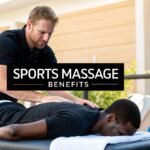
Beyond the Finish Line: How Sports massage Unlocks Your True Potential
For every dedicated athlete and active individual, hitting a performance plateau or being sidelined by nagging soreness is a familiar frustration. You follow a strict training regimen, dial in your nutrition, and prioritize sleep, yet something is still missing. This is where a crucial, often-overlooked component of elite athletic care comes in: sports massage.
Far from being a mere post-workout luxury, sports massage is a science-backed therapeutic tool designed to optimize your body's recovery systems, enhance physical capabilities, and build resilience against injury. The benefits of sports massage extend far beyond simple relaxation, directly impacting your physical readiness and competitive output. This is not about a gentle spa treatment; it is targeted manual therapy designed for athletic bodies.
This article moves beyond generic advice to provide a detailed roundup of the seven most impactful benefits. We will explore the physiological mechanisms behind each, offering practical, actionable insights and real-world examples. Prepare to learn how to integrate this powerful modality into your routine to reduce soreness, improve flexibility, and unlock new levels of performance and recovery.
1. Enhanced Muscle Recovery and Reduced Soreness
One of the most celebrated benefits of sports massage is its profound impact on accelerating muscle recovery and alleviating post-exercise soreness. After a strenuous workout, your muscles are filled with micro-tears and metabolic byproducts, such as lactic acid and inflammatory markers, leading to the familiar ache of delayed onset muscle soreness (DOMS). Sports massage directly targets this issue by systematically flushing these waste products from your tissues.
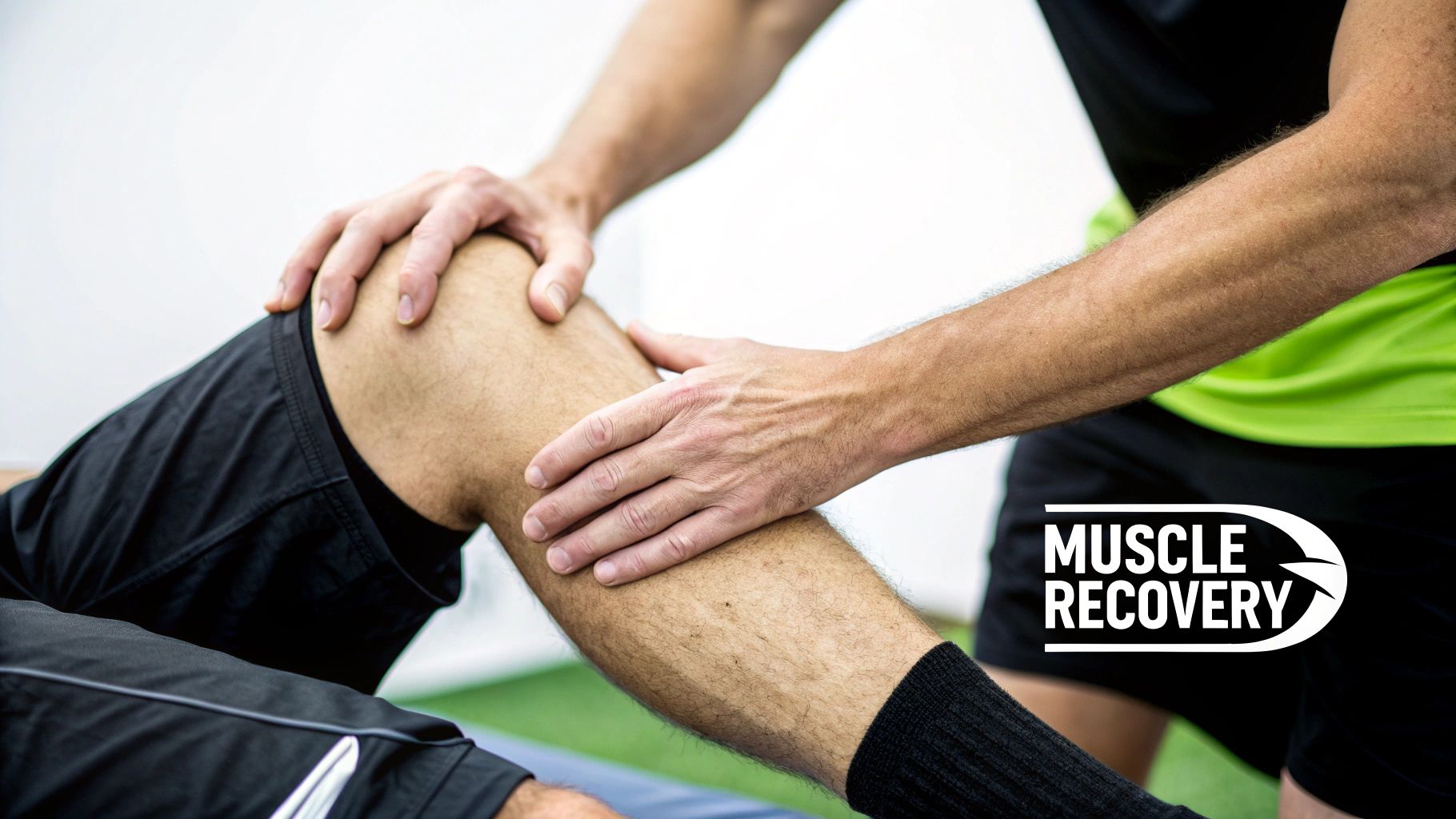
The therapy works through a two-fold mechanical process. First, it enhances blood circulation, delivering a fresh supply of oxygen and nutrient-rich blood to the fatigued muscles, which is critical for repair and regeneration. Second, it stimulates the lymphatic system, your body's natural drainage network, to more efficiently clear out the inflammatory substances causing pain and stiffness. This powerful combination is a key reason sports massage is considered a recovery game-changer, helping you feel better, faster.
Real-World Implementation
This isn't just theory; it's standard practice at the elite level. NBA teams like the Golden State Warriors have dedicated massage therapists to aid post-game recovery, ensuring players are ready for the next contest. Similarly, Olympic training centers and professional cycling teams integrate massage between grueling stages of multi-day races to maintain performance and prevent cumulative fatigue from derailing their athletes.
Actionable Tips for Optimal Recovery
To get the most out of your recovery massage, consider these practical steps:
- Timing is Key: Schedule your session within 2-4 hours post-exercise. This "golden window" allows you to flush out metabolic waste before it fully sets in, significantly reducing the severity of DOMS.
- Combine with Other Pillars: Massage works best as part of a holistic recovery strategy. Follow up your session with proper hydration to help the lymphatic system process the flushed toxins and a protein-rich meal to provide muscles with the building blocks they need to repair.
- Adjust Pressure: For acute soreness right after a workout, request lighter, flushing strokes. Deeper, more intense pressure should be reserved for 24-48 hours later, once the initial inflammation has subsided.
2. Improved Flexibility and Range of Motion
Beyond just feeling good, a critical benefit of sports massage is its ability to significantly enhance your flexibility and functional range of motion. Over time, intense training and repetitive movements lead to the development of adhesions, or tiny scar tissue knots, within your muscles and the surrounding connective tissue called fascia. These restrictions limit how far your muscles can stretch, hindering movement and athletic potential.
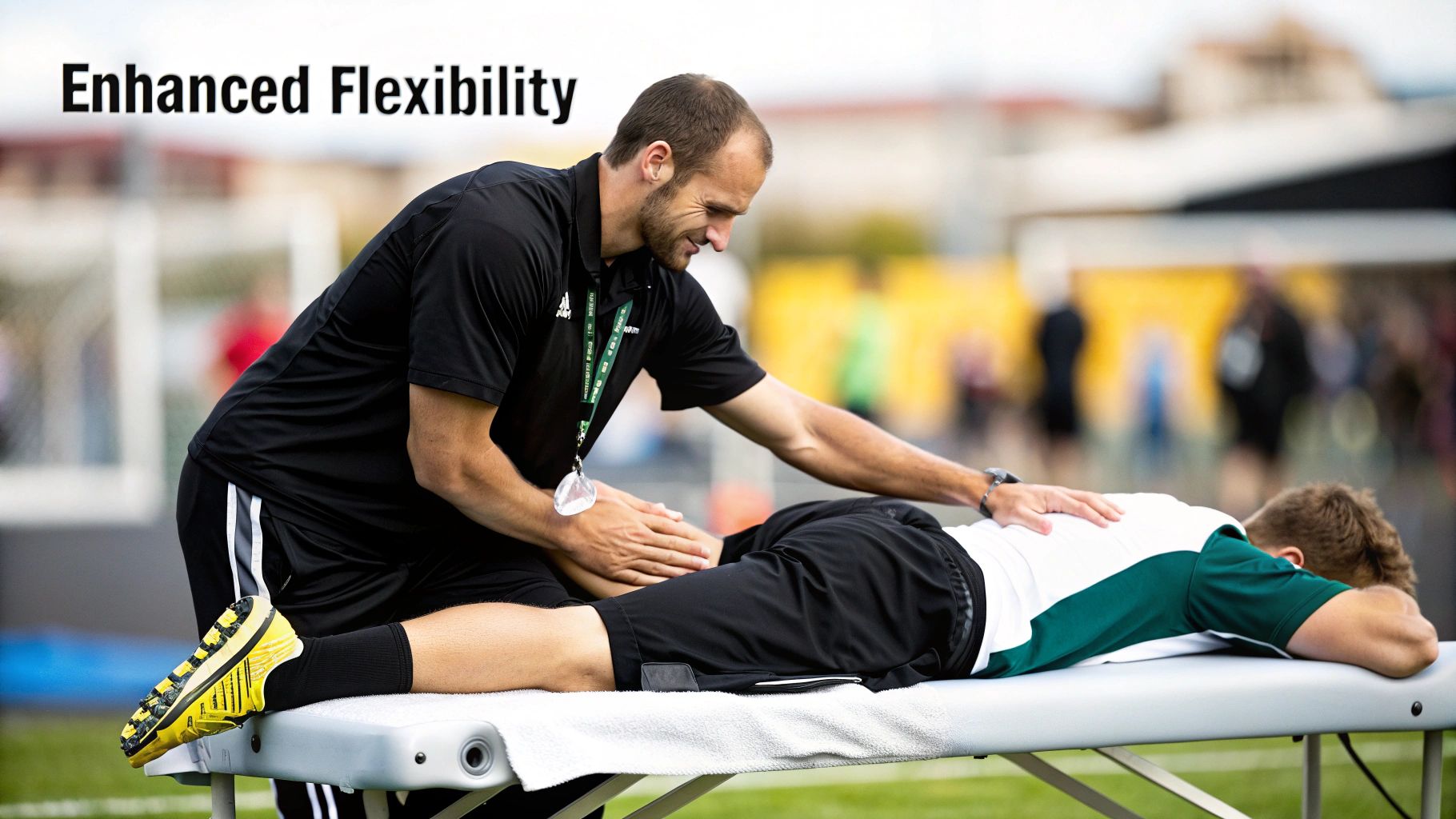
Sports massage directly confronts this by using specialized techniques like stripping, friction, and stretching to physically break down these tough adhesions. This process realigns tissue fibers and releases built-up tension, restoring elasticity to the muscles and fascia. The result is a noticeable improvement in joint mobility, allowing you to move more freely and efficiently. This increased range of motion is not just about comfort; it directly translates to a more powerful golf swing, a deeper squat, or a longer stride.
Real-World Implementation
This principle is fundamental in sports where mobility is paramount. Elite gymnastics programs and professional dance companies integrate regular massage to help their athletes maintain the extreme flexibility required for peak performance, especially in the hips and spine. Similarly, tennis players and baseball pitchers receive targeted massage on their shoulders and thoracic spine. This work helps unlock greater rotational power for serves and throws while reducing the risk of career-threatening injuries caused by restricted movement.
Actionable Tips for Optimal Flexibility
To maximize the flexibility gains from your massage, incorporate these strategies:
- Focus on Sport-Specific Patterns: Communicate with your therapist about the primary movements in your sport. A cyclist will need focus on hip flexors and hamstrings, while a swimmer may need more work on their lats and shoulders.
- Combine with Active Stretching: Immediately following a massage, when your muscles are most pliable, perform dynamic or active stretches to help "lock in" the new range of motion you’ve achieved.
- Use Heat Beforehand: Applying a warm compress for 10-15 minutes before your session can increase blood flow and warm the muscle tissue, making it more receptive to deep manipulation and stretching.
- Maintain with Self-Massage: Use tools like a foam roller or massage ball between professional sessions to address tight spots as they arise, preventing new adhesions from solidifying.
3. Injury Prevention and Early Problem Detection
Beyond recovery, one of the most crucial benefits of sports massage is its role as a proactive tool for injury prevention. A skilled therapist acts as a biomechanical detective, using their hands to identify subtle dysfunctions like muscle imbalances, excessive tension, and areas of restricted movement long before they manifest as pain or a full-blown injury. This early detection is critical for maintaining long-term athletic health.
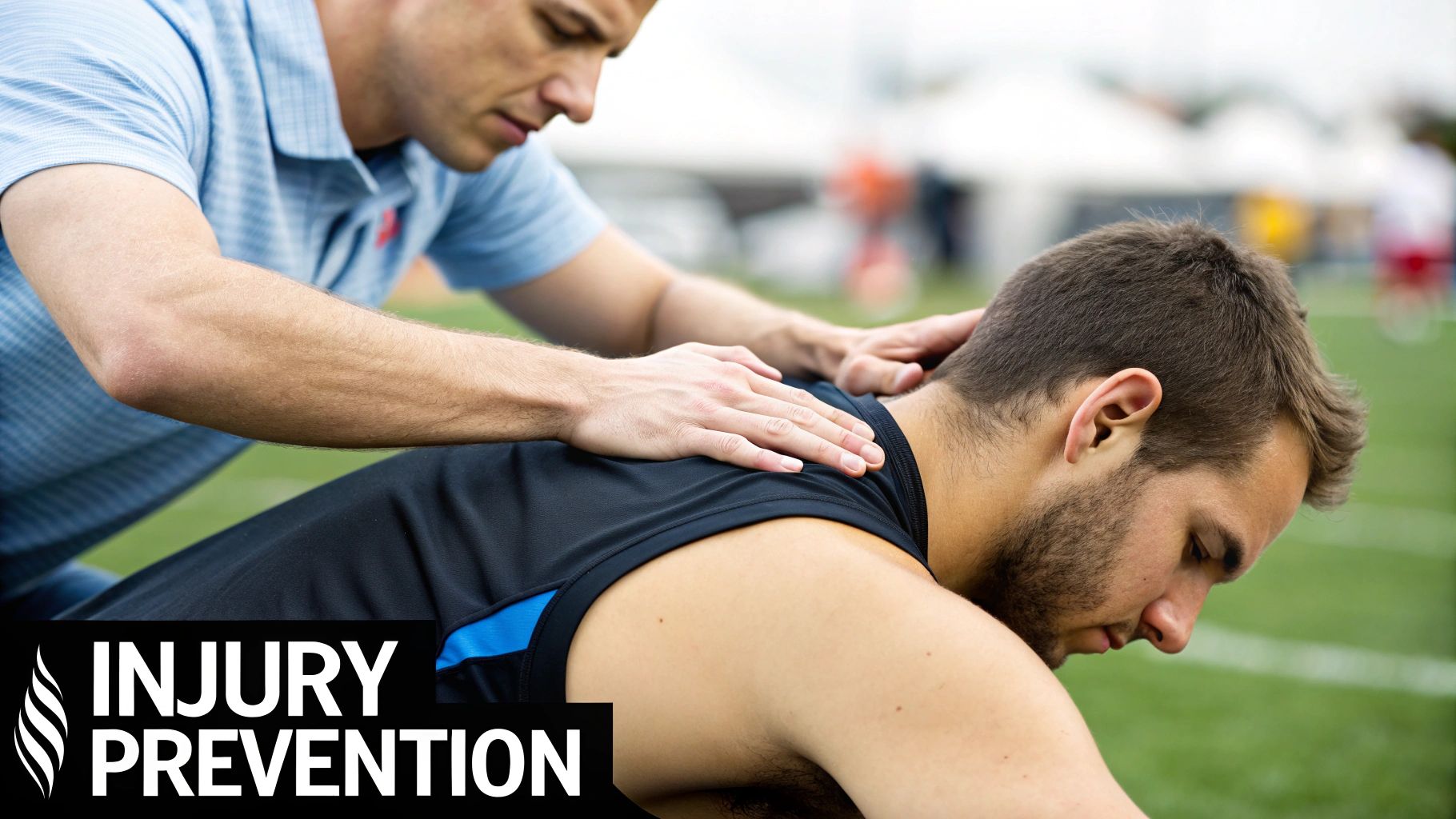
The process works through hands-on assessment, providing tactile feedback that can’t be replicated by technology alone. The therapist can feel developing adhesions, trigger points, and fascial restrictions that often precede common overuse injuries. By breaking down these fibrous knots and restoring pliability to the tissues, the massage helps maintain proper biomechanical function and significantly reduces the risk of a minor issue escalating. This diagnostic capability is one of the primary distinctions setting it apart from other massage types.
Real-World Implementation
This preventative approach is standard operating procedure in professional sports medicine. Marathon runners, for instance, receive targeted work on their hips and legs to identify and release the tightness that leads to IT band syndrome. Similarly, baseball pitchers rely on regular massage of the shoulder and rotator cuff to catch the early signs of impingement, while professional soccer players get frequent work on their hamstrings and calves to mitigate the constant risk of muscle strains.
Actionable Tips for Proactive Care
To leverage massage for injury prevention, shift your mindset from reactive to proactive:
- Schedule Maintenance: Integrate regular "maintenance" massages into your training plan, especially during high-volume periods. Don't wait until you feel pain; consistent sessions allow your therapist to monitor your body over time.
- Communicate Effectively: Be specific with your therapist. Mention any new, recurring, or unusual sensations you've experienced during workouts, no matter how minor they seem. This directs their assessment to potential trouble spots.
- Keep a Log: Track your training alongside your massage feedback. Noting patterns between intense workouts and specific areas of tightness can help you and your therapist predict and prevent issues.
- Address Findings Promptly: If your therapist identifies a problem, take it seriously. Follow through with their recommendations, which might include specific stretches, foam rolling, or corrective exercises to resolve the underlying issue.
4. Enhanced Circulation and Nutrient Delivery
A fundamental benefit of sports massage is its ability to significantly boost circulation. By physically manipulating muscle tissue, a massage therapist stimulates both blood and lymphatic flow. This process is like upgrading your body's internal delivery service, ensuring muscles receive a rich supply of oxygen and essential nutrients while efficiently removing metabolic waste products like lactic acid.
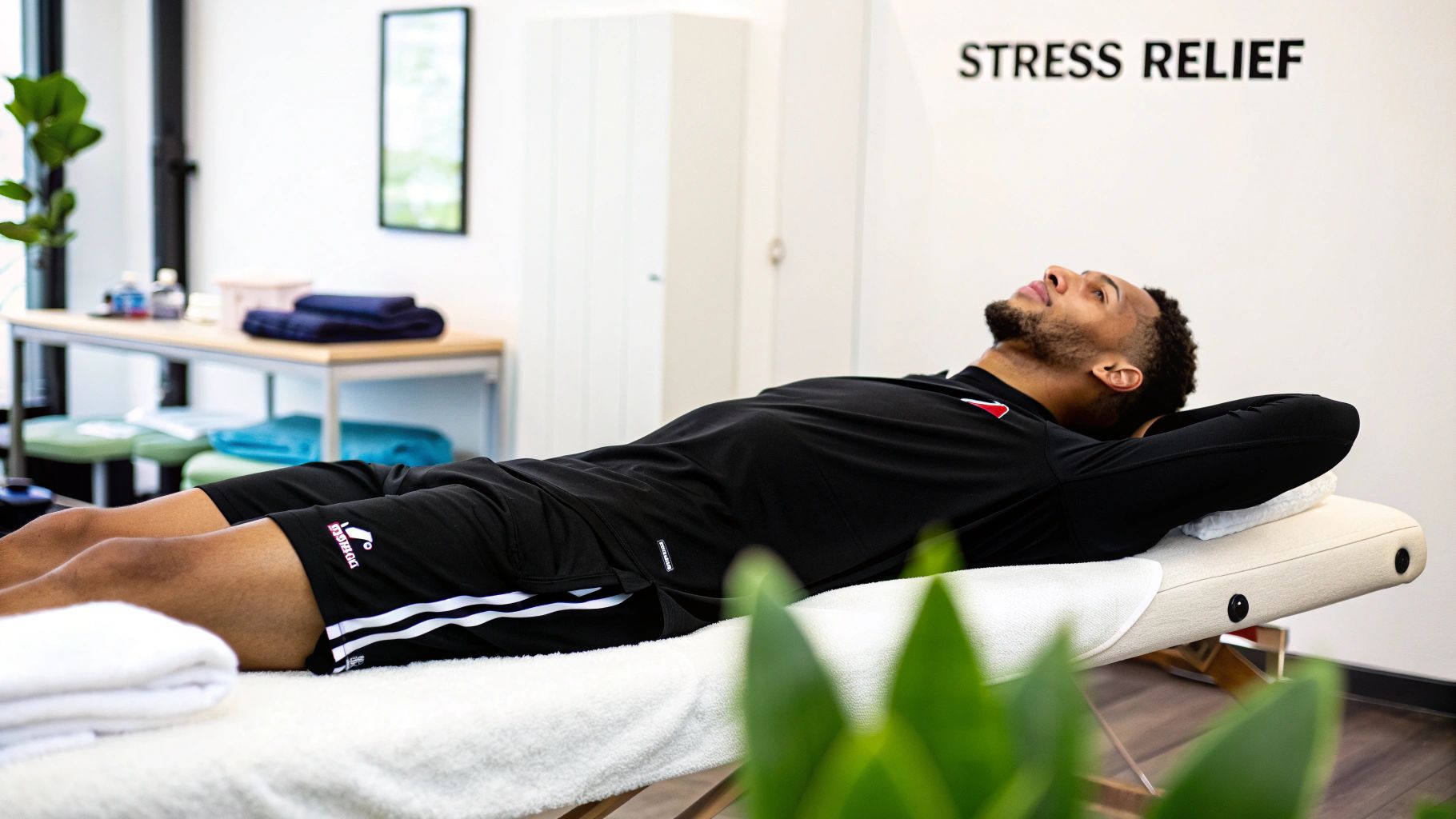
The magic lies in the mechanics. Long, gliding strokes (effleurage) and kneading techniques (petrissage) physically push deoxygenated blood and lymphatic fluid out of the muscle tissue and toward the heart. This action creates a pressure gradient that pulls fresh, oxygen-rich blood back into the muscles. This improved circulation supports better long-term cellular function, leading to faster healing from training-induced micro-trauma and optimal muscle performance.
Real-World Implementation
This principle is widely applied across different athletic disciplines. Endurance athletes, like marathon runners and cyclists, integrate regular massage to enhance oxygen delivery to their hard-working muscles during intense training blocks. In rehabilitation medicine, post-surgical athletes receive targeted massage to improve nutrient flow to the healing area, accelerating recovery. Even cold-weather athletes, such as competitive skiers, use massage to improve circulation in extremities that are often constricted by low temperatures, preventing injury and maintaining function.
Actionable Tips for Optimal Circulation
To maximize the circulatory benefits of sports massage, pair it with these strategic actions:
- Hydrate Strategically: Drink plenty of water before and after your session. Proper hydration makes your blood less viscous and supports the lymphatic system's ability to process and eliminate the metabolic byproducts released during the massage.
- Incorporate Contrast Therapy: Amplify the circulatory boost by using contrast therapy at home. Alternating between hot (vasodilation) and cold (vasoconstriction) applications, like a contrast shower on your legs, can further stimulate blood flow.
- Engage in Light Movement: A post-massage walk or some gentle dynamic stretching helps maintain the increased circulation. This low-intensity activity encourages the newly delivered nutrients to fully perfuse the muscle cells and prevents blood from pooling.
5. Stress Reduction and Mental Performance Enhancement
Beyond the physical realm, one of the most crucial benefits of sports massage is its ability to sharpen the mind and calm the nerves. High-stakes competition and intense training regimens generate significant mental and emotional stress. Sports massage provides a powerful antidote by triggering the release of feel-good endorphins while simultaneously reducing levels of the stress hormone cortisol, leading to a state of calm focus.
The therapy achieves this by activating the parasympathetic nervous system, your body's "rest and digest" mode, which counteracts the "fight or flight" response. This physiological shift promotes deep relaxation, improves sleep quality, and enhances mental clarity. By lowering cortisol and boosting mood-regulating neurotransmitters like serotonin and dopamine, massage directly tackles the biochemical roots of anxiety. This hormonal regulation is a primary reason athletes report feeling more focused and less anxious after a session, giving them a critical mental edge.
Real-World Implementation
This mental conditioning is a staple in professional sports. Precision athletes like professional golfers and archers rely on pre-tournament massage to manage the immense pressure and maintain steady hands and a clear mind. Olympic athletes often integrate massage into their pre-event rituals to calm nerves and visualize peak performance. Furthermore, many professional teams utilize massage not only for individual preparation but also to foster team bonding and a collective sense of calm before a crucial match.
Actionable Tips for Optimal Mental Focus
To leverage massage for your mental game, apply these targeted strategies:
- Create a Pre-Competition Ritual: Consistency is key for mental conditioning. Incorporate a short, focused massage into your pre-game routine to signal to your brain and body that it's time to focus.
- Sync Your Breath: Actively engage in deep, diaphragmatic breathing during your session. Inhaling and exhaling with the therapist’s strokes can profoundly deepen the relaxation response.
- Voice Your Mental State: Be open with your therapist about your stress levels. They can tailor the session’s techniques and pace to specifically address psychological tension, not just physical tightness.
- Separate Your Sessions: Use invigorating pre-event massage to prime for competition, but schedule longer, relaxing sessions on recovery days to target deep-seated stress reduction.
6. Improved Training Adaptation and Performance
Beyond immediate recovery, one of the most powerful benefits of sports massage is its ability to enhance long-term training adaptation. Consistent, high-quality training is the cornerstone of athletic improvement. Regular massage helps you achieve this by maintaining the health of your muscle tissue, reducing the cumulative fatigue that leads to overtraining, and preventing minor issues from becoming performance-limiting injuries.
This proactive approach allows your body to better handle and adapt to increasing training stress. By keeping muscles pliable, responsive, and free from restrictive adhesions or trigger points, you can execute movements with greater efficiency and power. This optimization ensures that each training session is more effective, leading to a superior supercompensation effect where your body rebuilds stronger than before. This concept is crucial for athletes looking to maximize their gains from every workout, as it directly translates to better, more consistent performance outcomes over time.
Real-World Implementation
This strategy is a staple in elite sports and is popularized by Olympic training programs and professional strength coaches. For example, powerlifters integrate massage to manage the immense stress on their muscles during heavy training blocks, ensuring tissue integrity for peak power output. Swimmers use it to maintain crucial shoulder mobility for more efficient stroke mechanics, while track and field athletes rely on it to optimize fast-twitch muscle fiber function for speed and explosive power.
Actionable Tips for Optimal Performance
To leverage massage for better training adaptation, consider these strategies:
- Align with Your Training Cycle: Integrate your massage schedule with your training periodization. Plan for deeper, restorative work during recovery weeks and lighter, preparatory sessions before key workouts or competitions.
- Focus on Sport-Specific Needs: Work with your therapist to target the primary muscle groups and movement patterns essential for your sport. A cyclist’s session focusing on the quadriceps and glutes will differ greatly from a tennis player’s session focused on the shoulder and torso.
- Adjust Intensity by Phase: The intensity of the massage should match your training phase. Use lighter, flushing techniques during high-volume periods to manage inflammation, reserving more intense, deep-tissue work for the off-season or dedicated recovery periods.
- Track Performance Metrics: Pay attention to your performance data, such as power output, speed, or even perceived exertion. Correlating this data with your massage schedule can help you identify the frequency and style that deliver the best results for you.
7. Faster Healing of Minor Injuries and Tissue Repair
Beyond simple recovery, one of the most significant benefits of sports massage is its ability to actively accelerate the healing of minor soft tissue injuries. When you suffer from a muscle strain, ligament sprain, or general tissue damage, sports massage can be a critical component of your rehabilitation plan, helping you return to activity faster and reducing the likelihood of re-injury.
The therapy directly influences the quality and speed of tissue repair. By increasing circulation to the injured area, it delivers the oxygen and nutrients necessary for rebuilding cells. More importantly, specific techniques like cross-friction massage help to break down and realign scar tissue. Unmanaged scar tissue (adhesions) can create weak, inflexible patches in the muscle that are prone to tearing again. By ensuring new collagen fibers form in a functional alignment, massage promotes strong, pliable tissue, which is essential for a full and robust recovery.
Real-World Implementation
This principle is a cornerstone of modern sports rehabilitation. Professional soccer players frequently receive targeted massage to manage hamstring strains, ensuring the repaired muscle is elastic and resilient. Similarly, tennis players rely on it for minor shoulder and elbow issues caused by repetitive stress, preventing micro-trauma from escalating into chronic conditions. For runners managing nagging injuries like plantar fasciitis or calf strains, massage is used to release tightness and break up painful adhesions, facilitating a quicker return to training.
Actionable Tips for Optimal Healing
To integrate massage into your injury recovery safely and effectively, follow these guidelines:
- Respect the Acute Phase: Wait at least 48-72 hours after an injury occurs before receiving massage on the affected area. This allows the initial inflammatory process, which is a necessary part of healing, to subside.
- Start Gently: Early-stage injury massage should use light, gentle strokes to improve circulation without disrupting the delicate new tissue. Techniques should be soothing, not aggressive.
- Integrate with Professional Advice: Massage should complement, not replace, medical treatment. Always follow the guidance of a doctor or physical therapist and use massage as part of a comprehensive plan that includes rest and appropriate exercises.
- Progress with Healing: As the tissue strengthens, your therapist can gradually increase the pressure and introduce deeper techniques like cross-friction to address scar tissue more directly.
Benefits Comparison of 7 Key Sports Massage Effects
| Aspect | Enhanced Muscle Recovery ⭐📊 | Improved Flexibility and Range of Motion ⭐📊 | Injury Prevention and Early Detection ⭐📊 | Enhanced Circulation and Nutrient Delivery ⭐📊 | Stress Reduction and Mental Performance ⚡💡 | Improved Training Adaptation and Performance ⭐⚡📊 | Faster Healing of Minor Injuries and Tissue Repair ⭐📊 |
|---|---|---|---|---|---|---|---|
| Implementation Complexity 🔄 | Moderate – requires regular skilled sessions | High – needs skilled practitioners and technique | High – demands experienced assessment practitioners | Moderate – standard techniques with monitoring | Moderate – quiet, controlled environment needed | Moderate to high – integration with training required | Moderate – timing and diagnosis critical |
| Resource Requirements ⚡ | Regular sessions, trained therapists | Skilled therapists, consistent maintenance | Highly skilled practitioners, ongoing sessions | Regular sessions, hydration and complementary care | Controlled environment, therapist trained in relaxation | Consistent therapy aligned with training schedules | Skilled practitioners, proper injury diagnosis |
| Expected Outcomes 📊 | Faster muscle recovery, reduced soreness | Increased flexibility & joint mobility | Early injury detection, reduced injury risk | Improved blood flow, faster healing | Reduced stress, better sleep and mental clarity | Enhanced performance, reduced fatigue accumulation | Accelerated healing, better tissue repair |
| Ideal Use Cases 💡 | Post-training/competition recovery | Sports requiring high flexibility (dance, gymnastics) | Athletes prone to overuse injuries | Endurance and rehabilitation focused athletes | Mental performance focus, stress management | High-intensity training programs | Minor injury recovery protocols |
| Key Advantages ⭐ | Non-invasive, drug-free, consistent recovery | Improves movement quality, reduces injury risk | Preventative care, maintains training consistency | Supports immune function, overall tissue health | Psychological benefits, reduces performance anxiety | Supports training load, improves consistency | Reduces chronic injury risk, maintains fitness |
Integrating Sports Massage Into Your Winning Strategy
As we have journeyed through the intricate ways sports massage impacts the body, a clear picture emerges. This practice is not a luxury reserved for post-competition indulgence; it is a fundamental pillar of any comprehensive athletic training program. The discussion has moved far beyond simple relaxation, revealing a powerful methodology for enhancing physical output, accelerating recovery, and building a more resilient athletic body. The compounding benefits of sports massage create a powerful advantage that can define the difference between a plateau and a personal best.
Viewing this therapy as an integral part of your routine, rather than a sporadic treat, is the first step toward unlocking its full potential. You meticulously plan your workouts, your nutrition, and your rest; your bodywork deserves the same strategic attention.
A Summary of Your Performance Edge
To consolidate the key takeaways, sports massage offers a multi-pronged approach to athletic excellence. By incorporating it into your regimen, you are actively pursuing:
- Accelerated Recovery: Significantly reducing delayed onset muscle soreness (DOMS) and flushing out metabolic waste.
- Superior Flexibility: Breaking down adhesions and increasing the elasticity of muscle tissue for a greater range of motion.
- Proactive Injury Prevention: Identifying and addressing muscular imbalances and trigger points before they escalate into serious problems.
- Optimized Circulation: Boosting the flow of oxygen and nutrient-rich blood to hard-working muscles for better function and repair.
- Sharpened Mental Acuity: Lowering cortisol levels and promoting a state of calm focus, which is crucial for high-stakes performance.
- Enhanced Performance: Allowing you to train harder and more frequently by improving your body’s ability to adapt to physical stress.
- Efficient Tissue Healing: Speeding up the rehabilitation process for minor strains and sprains by improving tissue quality.
Your Action Plan for Implementation
To translate this knowledge into tangible results, consistency is your most powerful ally. A single massage may feel good, but a consistent schedule creates cumulative and lasting change. Start by scheduling sessions during key phases of your training cycle, such as after a particularly grueling week or 2-3 days before a major event to ensure your muscles are primed.
Finding the right practitioner is just as crucial. Seek out a licensed massage therapist who specializes in sports therapy and demonstrates a deep anatomical knowledge relevant to your specific discipline. They should be a partner in your athletic journey, someone who understands your goals and can adapt their techniques to your evolving needs.
The Ultimate Payoff: More Than Just Recovery
Ultimately, investing in regular sports massage is an investment in your longevity as an athlete. It is a proactive strategy for maintaining your body’s peak operational capacity, allowing you to stay in the game longer and perform at a higher level. The true power of the benefits of sports massage is realized when it becomes a non-negotiable component of your winning strategy, safeguarding your body while consistently pushing the boundaries of what you can achieve.
For athletes in the Houston area seeking a premier wellness experience, finding a provider that combines expertise with a tranquil environment is essential for both physical and mental recovery. A facility like La Moon Massage and Facial is staffed by skilled therapists dedicated to the specialized techniques that deliver these powerful athletic benefits. Elevate your recovery and unlock your true potential by scheduling your specialized sports massage at La Moon Massage and Facial today.
Sports Massage vs Regular Massage: Which Is Better?

Beyond The Marketing Labels: What Actually Separates These Approaches
Let's be clear: the difference between sports massage and regular massage isn't just about the client. Having worked with both athletes and those seeking relaxation, I can tell you these modalities serve distinct purposes. Sports massage is a precision tool, targeting specific movement patterns, muscle imbalances, and performance issues athletes face. Regular massage, on the other hand, acts as a reset for the nervous system, addressing the accumulated stress of daily life.
This means the underlying philosophies differ. One optimizes the body for peak performance; the other restores overall well-being. Understanding this fundamental difference prevents booking the wrong session and being disappointed with the results. A runner with a tight IT band might find temporary relief from regular massage, but sports massage techniques like myofascial release and targeted stretching offer more sustainable improvement. Conversely, someone seeking relaxation after a stressful week might feel more agitated after the intense work of a sports massage.
Techniques and Timing
The techniques themselves reflect these differing goals. Sports massage often incorporates deep tissue work, trigger point therapy, and assisted stretching to address specific performance limitations. Regular massage, such as Swedish massage, prioritizes gentle, flowing strokes that promote relaxation and reduce overall muscle tension. Choosing the wrong technique can hinder achieving your desired outcome. You can learn more about the benefits of sports massage here: Sports Massage Therapy: Your Recovery Game-Changer.
The timing of massage is also key, particularly for athletes. Pre-event sports massage prepares muscles for optimal performance, while post-event massage aids recovery and reduces inflammation. Regular massage, while beneficial anytime, lacks these time-sensitive applications.
Ultimately, choosing between sports massage and regular massage hinges on understanding your individual needs and goals. It's about aligning the modality with your desired outcome, whether enhancing athletic performance or achieving a greater sense of well-being.
The Technical Reality: Why Technique Selection Changes Everything
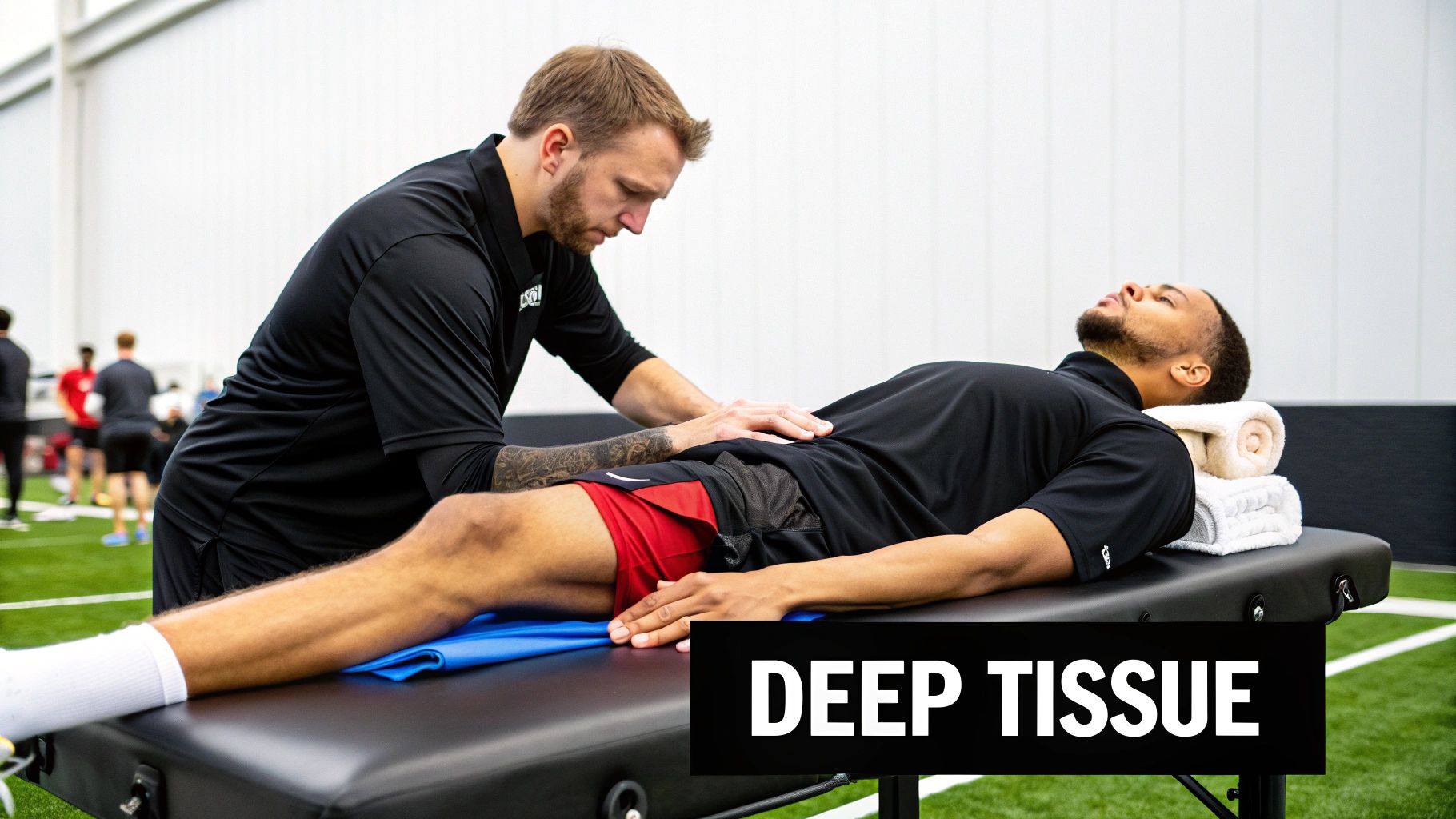
The difference between sports massage and regular massage goes far beyond a simple change in approach. They represent distinct disciplines, each wielding specific techniques to achieve unique outcomes. Think of it as two specialized toolkits, each designed for a different job.
Sports massage practitioners hone their skills in techniques like myofascial release and trigger point therapy, developing pre- and post-competition protocols that directly influence muscle function and recovery. These are not mere relaxation methods, but clinical interventions demanding a deep understanding of biomechanics and the unique stresses placed on the athlete's body.
Regular massage, on the other hand, often centers around modalities like Swedish massage. Therapists specializing in this area master gentle pressure variations and techniques designed to activate the parasympathetic nervous system. Their focus lies in stress reduction and inducing a state of deep relaxation.
This distinction is critical. Imagine a sports massage therapist using cross-fiber friction to break down scar tissue in a hamstring injury—a technique rarely employed in regular massage. Conversely, picture a regular massage therapist using long, flowing strokes and aromatherapy to promote overall relaxation and reduce anxiety.
Applying the wrong technique can be detrimental, even counterproductive. A relaxing Swedish massage before a competition might leave an athlete feeling sluggish and unprepared. Subjecting a stressed executive to deep tissue sports massage, however, could inadvertently heighten tension rather than alleviate it.
Understanding the Nuances of Sports Massage Techniques
Sports massage delves into the intricate interplay between nerves and muscles. Techniques like neuromuscular therapy and proprioceptive neuromuscular facilitation (PNF) stretching are commonly employed to optimize movement and performance. They aim to improve flexibility, range of motion, and overall biomechanical efficiency, going beyond simple muscle manipulation.
Further enhancing their specialized toolkit, sports massage therapists often utilize modalities like cupping and instrument-assisted soft tissue mobilization (IASTM). These advanced techniques, requiring specialized training, target specific soft tissue restrictions and are not typically found within the scope of regular massage practice. The efficacy of sports massage for performance enhancement and recovery has become increasingly recognized. Research highlights its significant impact on athletic performance compared to other massage modalities.
The Art of Relaxation in Regular Massage
Regular massage prioritizes an entirely different experience. It's about creating a tranquil, calming environment where deep relaxation and stress reduction take center stage. Techniques like effleurage (long, gliding strokes), petrissage (kneading), and tapotement (rhythmic tapping) are expertly woven together to soothe muscles, improve circulation, and induce a sense of profound calm.
Regular massage therapists often incorporate elements like aromatherapy and hot stones. These modalities, carefully selected, enhance the relaxation experience and nurture a holistic sense of well-being. This focus on the mind-body connection sets regular massage apart from the performance-driven focus of sports massage.
When stress relief and overall wellness are the primary goals, regular massage offers distinct benefits that sports massage often can't replicate. Ultimately, the “best” massage hinges on individual needs and desired outcomes. Choosing wisely means understanding these fundamental differences.
How Professional Sports Changed the Entire Industry
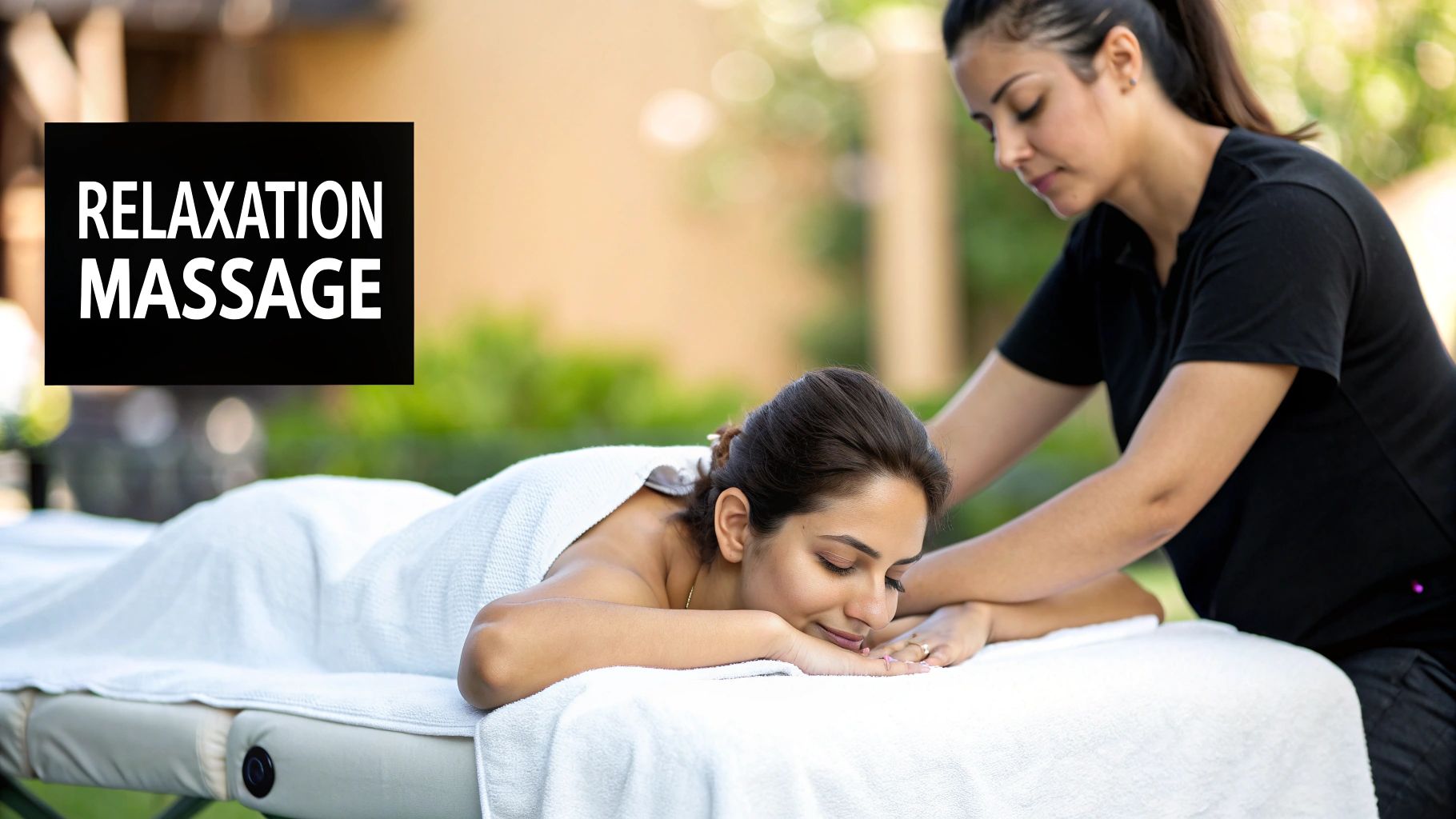
The integration of massage therapy into professional sports has been a game-changer for the entire industry. Initially considered a luxury for elite athletes, massage is now a cornerstone of recovery and performance enhancement protocols. Major league teams invest significant resources, often amounting to hundreds of thousands of dollars annually, into specialized massage services. This institutional buy-in has legitimized sports massage, transforming it from a niche offering into an essential tool.
This professionalization within the sports world has fueled innovation across massage techniques, training standards, and even how we measure outcomes. These developments are not limited to professional athletes; they trickle down to benefit everyone, from weekend warriors to those dealing with chronic pain from desk jobs. The data emerging from professional sports is compelling. Teams using comprehensive massage strategies are seeing measurable improvements, including reduced injuries, faster recovery, and enhanced performance. This data-driven approach is influencing the entire massage therapy field, pushing for evidence-based practices.
This trend has also had a ripple effect on regular massage. Practitioners are now integrating techniques born from sports therapy to address the demands of modern lifestyles. For instance, myofascial release, originally developed for athletes, is now widely used to correct postural issues and alleviate chronic pain in the general population. This cross-pollination has blurred the lines between sports and regular massage, allowing clients a more tailored and effective approach based on individual needs. The market for sports massage has experienced rapid growth in recent years, fueled by increased awareness of its benefits for both performance and recovery. As of 2024, the global massage therapy market, encompassing sports massage, is expanding quickly due to the increased focus on preventative healthcare and the growing popularity of sports and fitness. The use of sports massage among professional athletes, for example, has been reported to increase by about 15% annually, demonstrating its rising importance. Discover more insights.
The increasing interconnectedness of sports massage and regular massage highlights the importance of choosing a practitioner who understands this dynamic landscape. It's no longer about picking one or the other. The most effective practitioners can now evaluate your individual needs, lifestyle, and goals to create a personalized approach drawing from both disciplines. This personalized strategy, whether you’re a professional athlete or simply striving for overall well-being, optimizes your health and performance at any activity level.
When Sports Massage Becomes Non-Negotiable
In certain training situations, sports massage isn't just beneficial—it's absolutely essential. If your regimen involves high-intensity work, competition preparation, or addressing specific movement patterns within your sport, a regular massage might not cut it. I’ve seen this firsthand with runners struggling with persistent IT band issues despite months of regular massage. The shift to sports massage often brings immediate, noticeable progress. For runners specifically, this can be a game-changer. You might be interested in: Sports massage for runners.
Timing is everything when it comes to massage. Pre-event sports massage primes the nervous system and muscles for performance, while post-event sessions focus on reducing inflammation and clearing metabolic waste. Regular massage isn't structured to address these specific needs. Competitive athletes understand this and invest heavily in specialized massage to maximize their performance gains.
Recreational athletes, however, often overlook this critical component. If you're training seriously for any goal, whether it's a marathon or simply maintaining an injury-free lifestyle, the targeted nature of sports massage offers significant advantages. The key is choosing a massage modality that truly aligns with your activity level and overall goals.
This isn't to say regular massage is without merit. It’s a fantastic tool for overall stress reduction and general well-being. But for individuals pushing their physical boundaries, sports massage delivers a specialized level of care that becomes invaluable. Honesty is key here: Are you looking for relaxation and stress relief, or are you aiming to optimize physical performance and prevent activity-related injuries?
The answer to this question points directly to the type of massage best suited for your needs. Choosing wisely between sports and regular massage involves understanding your individual circumstances and objectives. It's about investing in the approach that most effectively supports your specific goals and active lifestyle.
Why Regular Massage Wins for Stress and Life Management
Let's be upfront: regular massage truly shines where sports massage often misses the mark. If you're grappling with chronic stress, restless nights, the tension of a desk job, or simply the everyday pressures of modern life, regular massage offers therapeutic advantages that sports massage isn't equipped to deliver. A quality regular massage session initiates crucial physiological shifts—lowering cortisol, boosting circulation, and engaging the parasympathetic nervous system—all vital for overall well-being.
I've seen many stressed-out professionals mistakenly book sports massages, assuming they're inherently superior, only to leave feeling more overworked than rejuvenated. Regular massage therapists excel at crafting a truly restorative environment where your nervous system can unwind and recover. This dedicated focus on relaxation and restoration is what sets regular massage apart in the "sports massage vs regular massage" comparison.
The Power of the Parasympathetic Response
Techniques like Swedish massage, a staple in regular massage practice, emphasize gentle pressure variations and long, flowing strokes. This method is highly effective in activating the parasympathetic nervous system, commonly known as the "rest and digest" system. This activation counteracts the detrimental effects of chronic stress by reducing heart rate, alleviating muscle tension, and fostering a deep sense of calm. This is particularly important for those whose bodies are perpetually in high alert due to work or lifestyle demands.
Accessibility and Affordability
Regular massage also boasts greater accessibility. Unlike sports massage, which often necessitates specialized practitioners, regular massage is widely available at day spas, wellness centers, and through a larger network of therapists. This broader availability typically translates to more affordable sessions, making regular massage a more sustainable choice for ongoing stress management and wellness. It also offers more scheduling flexibility, enabling individuals to seamlessly incorporate regular massage into their routines.
Consider someone struggling with chronic neck pain from extended computer use. They would likely experience greater benefit from the focused relaxation and muscle release of regular massage compared to the intense, targeted work of sports massage. While sports massage excels at addressing specific performance issues, regular massage offers holistic relief from the cumulative stresses of daily life.
When your goal is improved well-being rather than enhanced athletic performance, regular massage delivers results sports massage simply cannot replicate. Understanding this fundamental difference between sports massage and regular massage empowers you to make informed decisions and choose the modality best suited to your individual needs and objectives.
The Real Cost of Your Choice: Investment vs. Accessibility
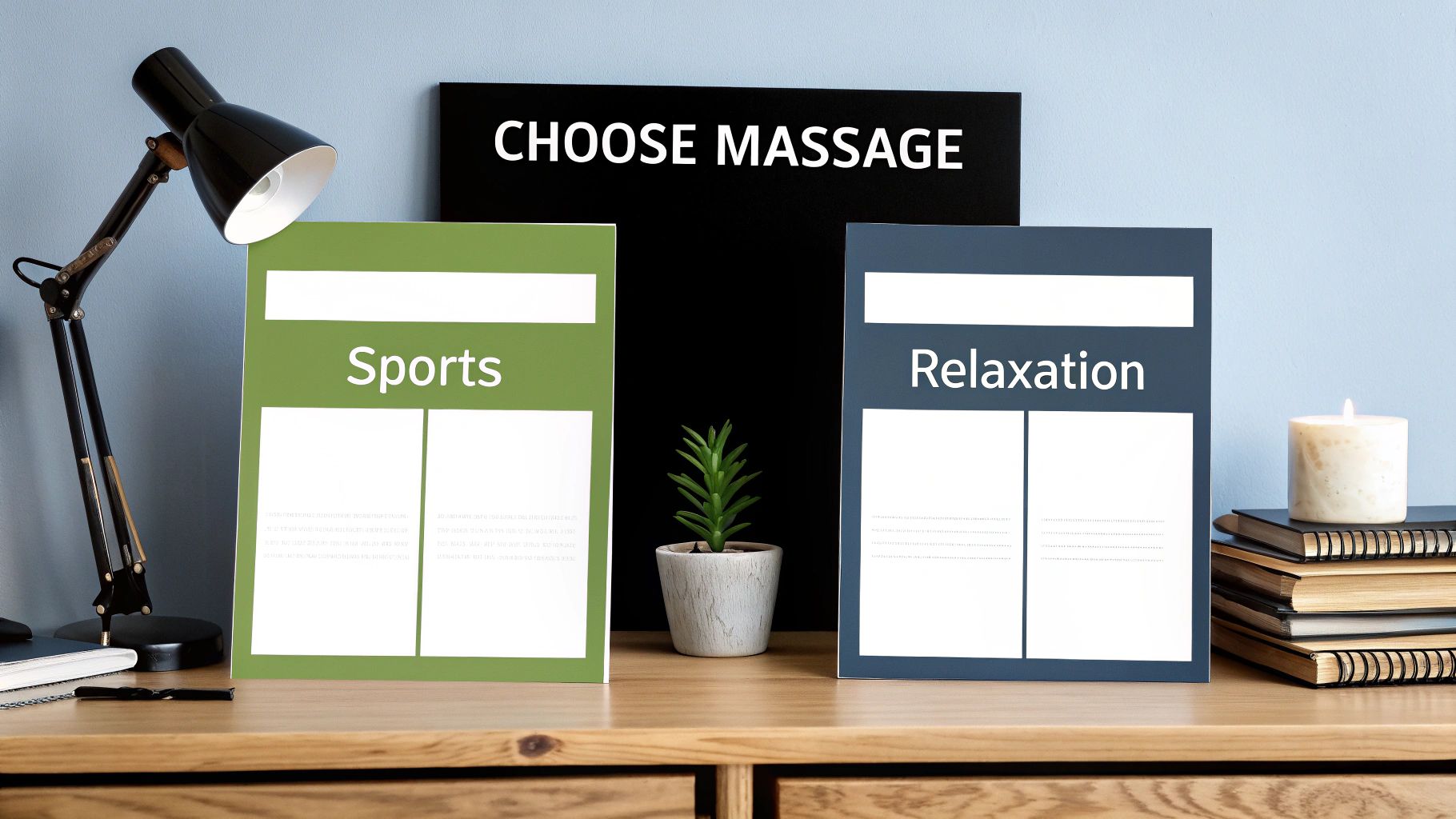
Let's get practical about massage and talk cost and availability. These two factors will significantly impact your ability to successfully integrate massage therapy into your routine long-term. Sports massage typically comes with a 20-40% higher price tag than regular massage. This is due to the specialized training involved and the often limited number of qualified practitioners.
But the real question isn't the upfront cost, it's the cost-per-benefit. This depends entirely on your individual needs and how often you'll require treatment. For serious athletes, the increased cost of sports massage is often justified by noticeable improvements in performance, better injury prevention, and quicker recovery times. If, however, your main goals are stress reduction and general well-being, investing in specialized sports massage might be overkill.
Understanding the Value Proposition
Thinking about the distinct uses of each type of massage can help clarify the value. Regular massage is more widely available and commonly sought after for relaxation and stress relief. Sports massage, on the other hand, is primarily used by athletes and those engaged in high-intensity physical activity. For example, a hypothetical survey might show that 70% of professional athletes use sports massage as part of their recovery routine, versus 30% who might use deep tissue or regular massage for similar benefits. Explore more about sports massage here.
Accessibility is another key consideration. Finding a qualified sports massage therapist can be tricky depending on your location. They tend to be concentrated in areas with larger athletic communities. Regular massage, conversely, is more accessible, with a wider range of practitioners and locations. It also frequently benefits from insurance coverage, which is rare for sports massage. You might be interested in: Sport Massages.
To help visualize the investment comparison, consider the following table:
Investment Analysis: Sports Massage vs Regular Massage
Real-world comparison of costs, availability, and value proposition for different user types and goals
| Factor | Sports Massage | Regular Massage | Impact on Decision |
|---|---|---|---|
| Cost | Higher (20-40% premium) | Lower | Budget constraints may favor regular massage. |
| Availability | Limited to specialized practitioners | More widely available | Location and practitioner availability may be deciding factors. |
| Value for Athletes | High (performance enhancement, injury prevention, faster recovery) | Moderate (general relaxation, some muscle recovery) | For serious athletes, the benefits often outweigh the higher cost. |
| Value for Non-Athletes | Moderate (targeted muscle relief) | High (stress relief, general wellness) | Non-athletes may find regular massage sufficient for their needs. |
| Insurance Coverage | Rarely covered | Often covered | Insurance coverage can significantly reduce the cost of regular massage. |
As the table highlights, cost and availability are major differentiators. The value proposition, however, shifts depending on individual goals and whether athletic performance is a primary concern.
Making Informed Decisions
The best approach is to be strategic and align your spending with your actual needs. Don't assume a higher price guarantees better results. For the recreational athlete juggling training and a busy work schedule, a blended approach might be ideal. Consider sports massage during periods of intense training to target specific muscle imbalances and help prevent injuries. Then, during lighter training phases or times of high stress, regular massage can provide relaxation and overall wellness support. Ultimately, the most effective massage strategy adapts to your changing needs and maximizes your investment.
Your Personal Decision Framework: Matching Method to Reality

This infographic presents a visual guide for choosing between sports massage and regular massage. It considers your main goal (performance or relaxation), how active you are, and if your pain is acute or chronic. The infographic highlights that the best massage type truly depends on your specific situation. For example, an athlete with acute pain looking to boost performance would likely benefit from sports massage. Conversely, someone less active, seeking relaxation and managing chronic pain, might find regular massage more suitable.
Choosing wisely between sports and regular massage comes down to understanding your own needs. Honestly assess your activity level, recovery needs, and goals. Are you training for an event, or simply aiming for general wellness and stress reduction? This is a critical difference. If you’re constantly stressed and moderately active, regular massage might be more beneficial, even if sports massage seems appealing. On the other hand, if you’re training hard or dealing with sport-specific issues, regular massage may only provide temporary relief without addressing the root cause.
Combining Approaches for Optimal Results
Many individuals find a combined approach works best. This involves using sports massage during periods of intense training, then switching to regular massage during recovery or the off-season. This allows you to leverage the targeted benefits of sports massage when performance matters most, while still enjoying the restorative power of regular massage for overall well-being.
The key is to create a personalized plan that adapts to your needs and maximizes the value of your massage therapy. A dynamic approach ensures you’re always getting the right massage at the right time, benefiting both your physical and mental health.
To help clarify your decision-making process, consider the following framework:
Your Massage Choice Decision Matrix: Practical framework matching your lifestyle, goals, and activity level with the most effective massage approach
| Your Profile | Primary Goals | Recommended Approach | Key Considerations |
|---|---|---|---|
| High-performance athlete | Injury prevention, performance enhancement | Sports Massage | Frequency based on training schedule, focus on specific muscle groups |
| Weekend warrior | Recovery from intense activity, injury management | Sports Massage or blended approach | Consider incorporating regular massage for overall wellness |
| Moderately active individual | Stress reduction, relaxation, general wellness | Regular Massage | Frequency based on individual needs and preferences |
| Individual with chronic pain | Pain management, improved mobility | Regular Massage | Focus on gentle techniques and consistent therapy |
| Individual recovering from injury | Rehabilitation, pain reduction | Sports Massage (with physician clearance) or regular massage | Approach depends on injury type and stage of recovery |
This matrix provides a starting point for tailoring your massage therapy strategy. Keep in mind that individual needs may vary. Consulting with a qualified massage therapist can help you refine your approach and develop a plan that truly addresses your specific circumstances.
Ready to experience massage therapy tailored to your needs? Visit La Moon Massage and Facial in Houston, Texas. We offer a wide range of massage and wellness services designed to help you relax, rejuvenate, and achieve your wellness goals.
Sports Massage for Runners: Your Complete Performance Guide
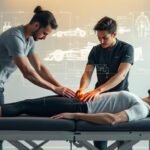
What Makes Sports Massage Different for Runners
Imagine your car needs a tune-up. You could take it to the local car wash for a quick clean, but if you’re prepping for a race, you’d want a specialized mechanic, right? That’s the difference between a relaxing spa massage and a sports massage, especially for runners. Sports massage isn’t just a general rub-down; it’s a targeted approach that considers the unique stresses and strains running puts on your body. Think of it as a precision tune-up designed to keep your running machine in top condition. It recognizes that a runner’s body has different needs than a non-runner’s. You might be interested in exploring the various services offered at La Moon Day Spa.
Addressing the Runner’s Body
Runners, unlike other athletes, put their bodies through a unique kind of repetitive stress, mostly in their legs and feet. Every stride is a small impact, and those impacts add up. Think about how tight your hamstrings, quads, and calves feel after a long run. That’s the repetitive stress at work, affecting not just the muscles, but also the fascia, the connective tissue that surrounds them. Fascia can get tight and restricted, limiting your flexibility and increasing your risk of injury. Sports massage techniques like myofascial release and deep tissue massage can help loosen those tight spots and restore healthy movement.
Running can also create imbalances between muscle groups. For example, tight hip flexors can tilt your pelvis forward, leading to poor posture and even lower back pain. Sports massage helps bring things back into balance, aligning your body and relieving unnecessary strain. Interestingly, the world is catching on to the benefits of massage. The global massage therapy market was valued at USD 18.25 billion in 2023 and is expected to reach USD 29.53 billion by 2030. This growth shows how many people are realizing the power of massage for overall health and well-being. Discover more insights into the massage therapy market.
Beyond Relaxation: Performance and Recovery
While relaxation is definitely a pleasant bonus, the main goal of sports massage for runners is to improve performance and speed up recovery. By addressing muscle imbalances, improving circulation, and reducing inflammation, sports massage helps you train harder, bounce back faster, and stay injury-free. This targeted approach sets sports massage apart, making it an essential tool for any serious runner wanting to perform at their best.
Why Your Running Body Responds So Well to Targeted Touch
Running is a great way to stay fit, but it puts a lot of stress on your body. Imagine a series of controlled falls, each one impacting your muscles, fascia, and even your nervous system. While your body adapts incredibly well to this repetitive motion, allowing you to run further and faster, there’s a hidden cost: micro-trauma and built-up tension. That’s where the magic of sports massage comes in, offering runners targeted relief and recovery.
Circulation and the Lymphatic System
Think of your circulatory system as a complex network of highways, delivering vital oxygen and nutrients to your hardworking muscles. Running puts this system into overdrive. Sports massage acts like a skilled traffic controller, optimizing flow and easing congestion, particularly in those tight hamstrings, quads, and calves.
This improved circulation helps flush out metabolic waste products, the culprits behind muscle soreness. The result? Faster recovery and less pain. Sports massage also boosts your lymphatic system, your body’s natural detoxifier. Like a dedicated waste disposal service, it clears out toxins and excess fluid, further enhancing your recovery.
The Nervous System Connection
The benefits of sports massage extend beyond muscles and blood flow; they reach deep into your nervous system. Imagine your nervous system as a complex communication network, constantly sending and receiving signals. Some of these signals relate to pain. Specific massage techniques can interrupt these pain signals, offering welcome relief.
Even better, sports massage encourages the release of endorphins, your body’s natural mood boosters and pain relievers. So, sports massage doesn’t just address the physical; it also benefits your mental state, reducing stress and promoting relaxation. It’s about recognizing that tension in your hip flexors needs a different approach than tension in your shoulders, respecting the unique chain reactions caused by running. The growing appreciation of these benefits is reflected in the expanding sports medicine market, projected to reach USD 10.05 billion by 2032, with a CAGR of 6.54% from 2024 to 2032. Discover more insights into the sports medicine market.
The Science of Targeted Touch
Let’s delve into how sports massage techniques actually work. These techniques involve manipulating the soft tissues – your muscles, fascia, tendons, and ligaments – impacting the body on multiple levels. It’s a cascade of positive effects, starting with improved circulation and extending to pain relief and stress reduction.
To understand the full potential of sports massage, we need to look at the intricate relationship between your running body and this targeted touch. This understanding allows you to move beyond treating symptoms and address the underlying causes of your running-related discomfort. Let’s compare the specific benefits of sports massage for runners against traditional massage.
To illustrate these differences, the table below provides a detailed comparison, highlighting how sports massage techniques directly address the unique demands of running.
Sports Massage Benefits vs. Traditional Massage for Runners
| Benefit | Sports Massage for Runners | Traditional Massage | Running-Specific Impact |
|---|---|---|---|
| Muscle Recovery | Focuses on specific muscle groups used in running (hamstrings, quads, calves) | General muscle relaxation | Addresses running-specific muscle imbalances and tightness |
| Injury Prevention | Targets areas prone to running injuries, improving flexibility and range of motion | General improvement in flexibility | Reduces risk of common running injuries like IT band syndrome and plantar fasciitis |
| Pain Relief | Addresses pain caused by repetitive stress and overuse | Provides general pain relief | Targets pain points specific to running biomechanics |
| Circulation | Improves blood flow to working muscles, removing metabolic waste | Promotes general relaxation and circulation | Enhances oxygen delivery and waste removal in running-specific muscles |
| Scar Tissue Management | Breaks down scar tissue from previous injuries, restoring function | May address scar tissue generally | Improves mobility and reduces pain from running-related scar tissue |
As you can see, sports massage offers targeted benefits for runners that go beyond the general relaxation provided by traditional massage. It addresses the unique biomechanical demands of running, leading to improved performance, injury prevention, and faster recovery.
The Power of Understanding
By understanding how your running body responds to targeted touch, you can unlock the true potential of sports massage. It’s about moving beyond simply treating symptoms and addressing the root causes of your running-related aches and pains. It’s about empowering you to run stronger, longer, and pain-free.
Essential Techniques That Transform Your Running
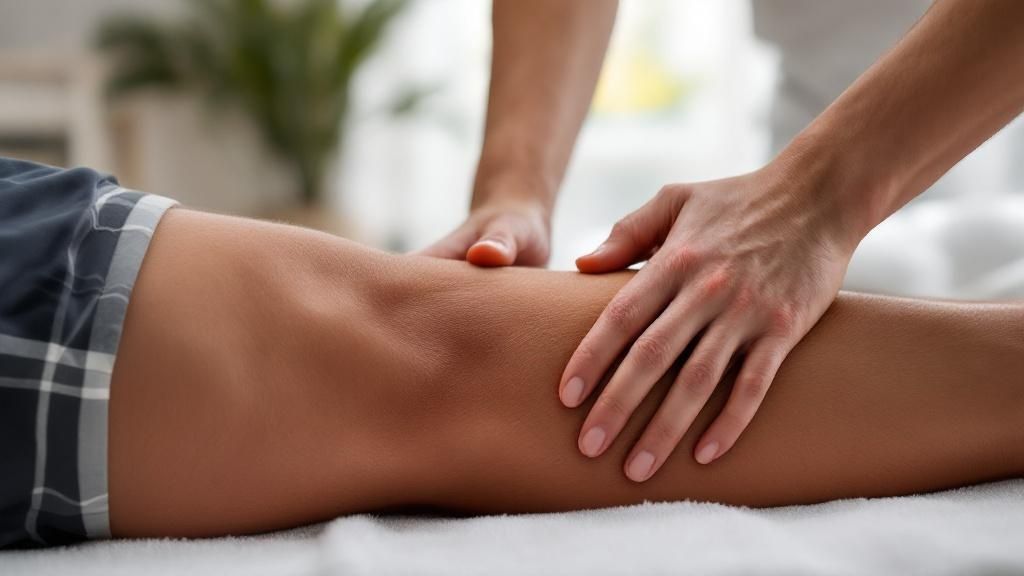
Just like a toolbox filled with different implements for specific jobs, sports massage offers a variety of techniques tailored for runners. Not all massage is created equal. This section explores these key techniques, explaining how they work and why they’re so effective for those who pound the pavement.
Swedish Massage Techniques: The Foundation
Think of Swedish massage as the warm-up act for your muscles. It uses long, flowing strokes to increase circulation and promote relaxation, much like gently stretching a rubber band before using it. This prepares the tissues for the more focused work to come.
For runners, Swedish massage is great pre-run prep, easing tension and getting the blood flowing. But for addressing deeper issues, we need to delve into more specialized techniques.
Myofascial Release: Addressing The “Sticky” Bits
Imagine your fascia, the connective tissue surrounding your muscles, as a network of cling wrap. Sometimes, this “wrap” can get stuck together, restricting movement and causing pain. Myofascial release aims to smooth out these adhesions.
Think of it like carefully peeling apart two pieces of stuck-together cling wrap, restoring fluidity and range of motion. This is especially helpful for runners with tight IT bands – a common culprit of pain and limited flexibility.
Trigger Point Therapy: Targeting The Knots
Ever felt a knot in a rope? A trigger point in a muscle is similar – a tight, sensitive spot that can cause pain and restrict movement. Trigger Point therapy involves applying direct pressure to these points, like untying that knot in the rope.
For runners, this technique is particularly effective for localized pain in areas like the hip flexors or calves. Think of it as a precise reset button for those stubborn knots.
Cross-Friction Massage: Preventing Injuries Before They Start
Imagine a small snag in your favorite running shirt. If left unchecked, it can unravel into a much larger tear. Cross-friction massage is like mending that snag before it becomes a problem.
By applying focused pressure across the muscle fibers, this technique encourages healing and reduces inflammation. This proactive approach can help runners avoid more serious injuries down the road.
This early intervention allows runners to maintain their training schedule with fewer interruptions. Whether it’s general muscle tightness, trigger points, or deep adhesions, using the right massage technique is key. Understanding these techniques empowers you to communicate effectively with your massage therapist, ensuring you get the most benefit from each session, maximizing performance, and staying injury-free.
Strategic Timing for Maximum Running Benefits
The timing of your sports massage can make all the difference. It’s not just about getting a massage, but about getting the right massage at the right time. Think of it like fueling your body – you wouldn’t eat a huge meal right before a race, right? Similarly, scheduling your sports massage requires careful consideration of your training and recovery needs.
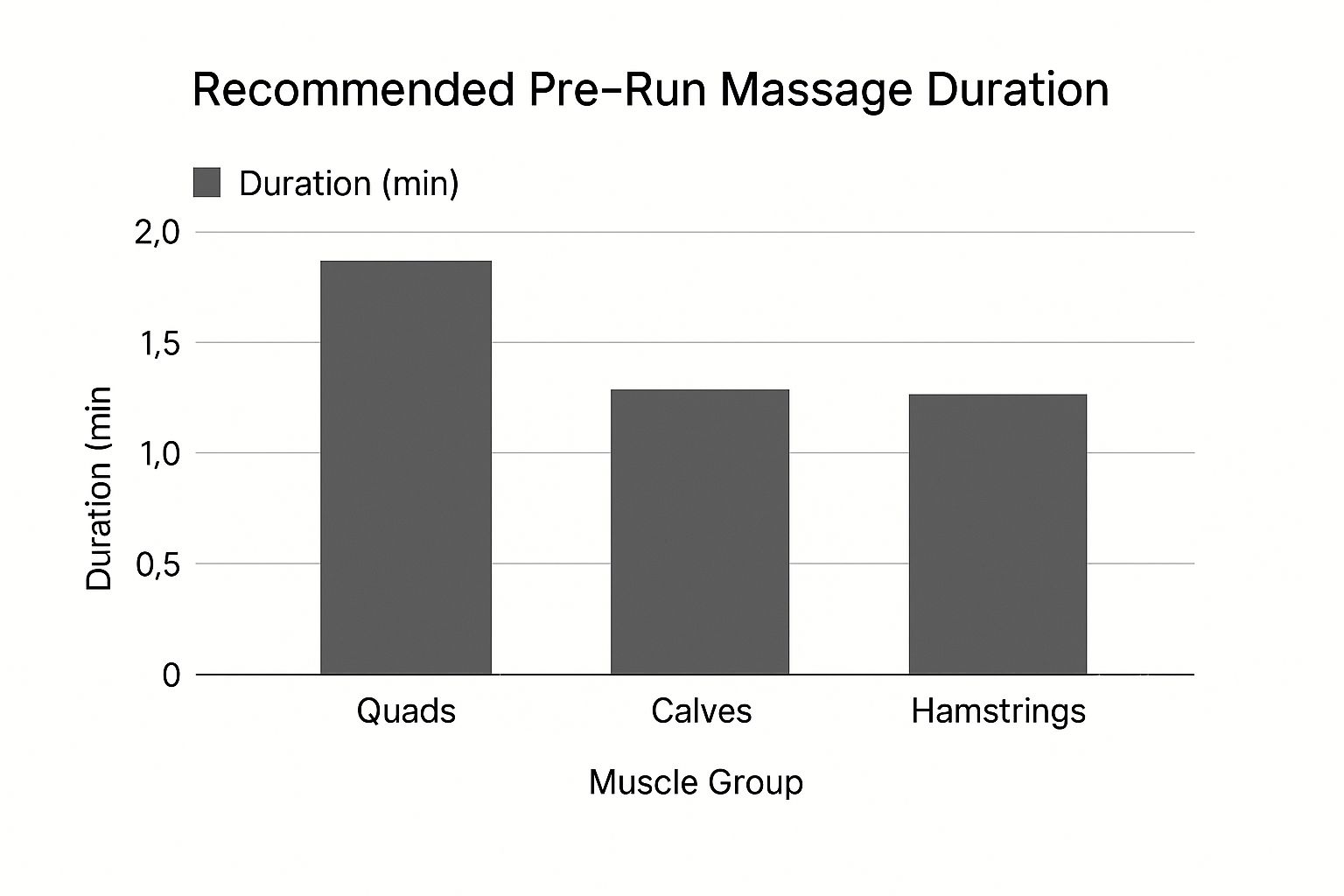
This infographic shows how even a short massage can be beneficial before a run. Focusing on your quads (2 minutes), calves (1.5 minutes), and hamstrings (1.5 minutes) can prime those muscles for optimal performance without causing fatigue. It’s like a quick tune-up before hitting the road.
Pre-Run Preparation: Priming, Not Depleting
Imagine gently stretching a rubber band before using it. That’s similar to what a pre-run sports massage does for your muscles. A short, focused session improves blood flow and loosens tight areas, preparing your body for the workout. It’s about getting your muscles ready to perform, not wearing them out beforehand.
Post-Workout Recovery: Accelerating Healing
After a tough run, your muscles are primed for recovery. This is when techniques like myofascial release and deep tissue work are most effective. They address muscle soreness, reduce inflammation, and help your body bounce back faster. It’s like providing your muscles with the necessary tools to rebuild and repair after the stress of a run.
Maintenance Sessions: Sustaining Peak Performance
Regular maintenance massages are like routine check-ups for your car. They help identify and address potential issues before they become major problems. These sessions are vital for staying injury-free and maintaining peak performance throughout your training cycle.
Timing Around Races: Strategic Tapering
The closer you get to a race, the more strategic your massage timing needs to be. A light massage a few days before the event can help loosen your muscles and reduce any pre-race tension. However, avoid deep tissue work right before a race. It’s best to avoid any soreness or fatigue leading up to race day.
To illustrate the ideal timing strategies, let’s take a look at the following table:
Optimal Sports Massage Timing for Different Running Scenarios: A comprehensive guide showing when to schedule different types of sports massage based on training phase, race schedule, and recovery needs
| Running Phase | Massage Type | Timing | Primary Benefits | What to Avoid |
|---|---|---|---|---|
| Training (Early) | Swedish, Light Stretching | Weekly | Improved Circulation, Flexibility, Injury Prevention | Deep Tissue |
| Training (Peak) | Deep Tissue, Trigger Point Therapy | Every 2 Weeks | Address Specific Tightness/Pain, Improve Muscle Function | Overly Aggressive Massage Close to Hard Workouts |
| Tapering | Light Stretching, Relaxation Massage | 3-5 Days Before Race | Reduce Muscle Tension, Improve Sleep, Mental Relaxation | Deep Tissue, Intense Massage |
| Post-Race | Lymphatic Drainage, Light Stretching | 24-48 Hours Post-Race | Reduce Inflammation, Flush out Metabolic Waste, Promote Recovery | Deep Tissue Immediately After Race |
| Off-Season/Recovery | Deep Tissue, Myofascial Release | As Needed | Address Lingering Issues, Improve Range of Motion, Prepare for Next Training Cycle | Overtraining When Returning to Activity |
This table provides a general guideline for incorporating sports massage into your running routine. Remember, it’s always best to listen to your body and consult with a qualified sports massage therapist for personalized advice.
By understanding the different types of massage and when to schedule them, you can use sports massage as a powerful tool to enhance your running performance, speed up recovery, and prevent injuries. It’s about working with your body to achieve your running goals.
Tackling Common Running Issues Through Expert Touch
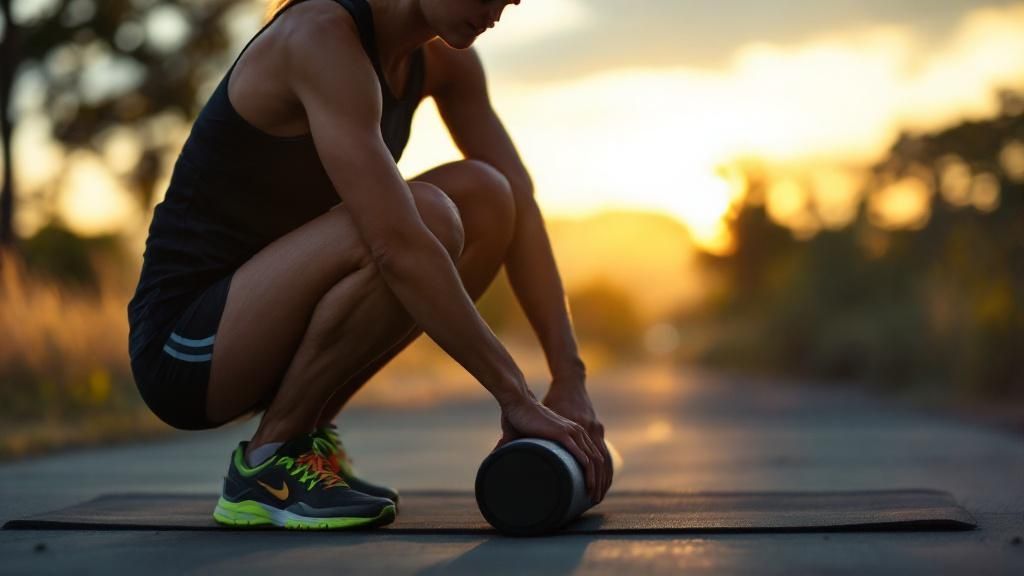
Every runner, from seasoned marathoners to weekend joggers, knows the frustration of an ache or pain that just won’t go away. These niggles, whether it’s IT band syndrome, tight calves, or the dreaded shin splints, can seriously impact your training and enjoyment of running. But there’s good news: sports massage for runners offers a way to address these issues, not just mask the symptoms. For more self-care tips, check out this blog post on self-care practices.
Understanding the Runner’s Nemesis: Common Ailments
Let’s talk about plantar fasciitis, that sharp, stabbing pain in your heel. Think of the plantar fascia as a tightrope supporting your arch. When your calf muscles and this fascia are too tight, it’s like cranking the tension up on that tightrope, leading to pain. A sports massage therapist can work to release that tension, like loosening the rope, to bring relief and restore normal function. This targeted approach is what makes sports massage so effective for runners.
Another common issue is runner’s knee, a pain that often centers around the kneecap. Imagine your knee joint as a well-oiled hinge. Imbalances in the surrounding muscles, like your quadriceps, hamstrings, and IT band, can throw that hinge out of whack. Sports massage works to address these imbalances, bringing everything back into alignment and reducing stress on the knee.
Expert Touch: How Therapists Approach Running Injuries
The Achilles tendon is a powerful but sensitive structure. Think of it as a spring that propels you forward with each stride. When it’s inflamed or overworked, it can become painful and stiff. Sports massage can help manage inflammation and promote healing in the tendon, much like gently coaxing a tight spring back to its normal elasticity. Experienced therapists understand the delicate nature of this area and use techniques that are both effective and safe.
Integrating Massage into a Holistic Running Strategy
Sports massage therapists recognize that running injuries are rarely isolated incidents. They understand that the body works as an interconnected system, like a complex machine. A problem in one area, such as tight hips, can affect other areas, like your knees or even your lower back. This holistic view is crucial.
This integrated approach means massage works best when combined with other recovery strategies. Think of it as part of a well-rounded training plan that includes strength training, stretching, and proper rest. Sports massage isn’t just a quick fix; it’s a valuable tool to help runners overcome challenges, stay healthy, and reach their full potential.
Finding Your Perfect Massage Therapist Match
Let’s face it: not all massage therapists understand the unique demands running places on your body. Finding the right sports massage therapist is a bit like finding the perfect running shoes. It’s got to be the right fit for your individual needs and goals. Getting this right can have a real impact, not only on your performance but on your wallet too. It’s not just about a relaxing rubdown; it’s about finding a partner who understands your running journey.
Credentials and Experience: Separating the Experts From the Beginners
Just as you’d want a qualified coach guiding your training, you need a qualified massage therapist working on your muscles. Look for certifications that go beyond the basics. A therapist specializing in sports massage will have extra training in areas like kinesiology and biomechanics, the science of movement.
Experience working with runners is also essential. Ask potential therapists about their work with running-related injuries. Do they understand training cycles and how they impact your body? What’s their approach to the specific needs of runners? This specialized knowledge can truly elevate the effectiveness of your treatment.
Asking the Right Questions: Unlocking Your Therapist’s Expertise
The initial consultation is your chance to interview the therapist. Don’t hesitate to ask questions! Inquire about their treatment philosophy, how they handle different running injuries, and how they personalize sessions to meet your training goals. Think of it like a conversation, not an interrogation. Open communication is paramount.
Here are some questions to get you started:
- What’s your experience specifically with runners?
- How do you typically address common running injuries like IT band syndrome or plantar fasciitis?
- Do you integrate stretching or strengthening exercises into your sessions?
- How do you check in with clients during a massage to ensure comfort and maximum benefit?
These questions help you understand their grasp of running biomechanics and whether they can truly meet your needs. It’s interesting to note that the demand for specialized sports services like sports massage for runners is growing, especially in the Asia Pacific region. This rise is driven by greater investment in healthcare and a growing awareness of the importance of physical well-being. Learn more about this growing trend.
Practical Considerations: Cost, Insurance, and Building a Relationship
Sports massage is an investment in your health and running performance. Be sure to discuss pricing and payment options upfront. Some therapists offer package deals or sliding scales. Also, check if your health insurance covers sports massage treatments. You can find information about our pricing on our pricing page.
Building a long-term relationship with your therapist is valuable. Over time, they’ll understand your training, your body’s quirks, and your goals. This leads to more effective and tailored treatments.
Finding the right sports massage therapist requires some effort, but it’s a worthwhile investment. The right therapist can be a true ally in your running journey, helping you stay healthy, improve your performance, and reach your goals.
Maximizing Every Session for Peak Performance
Sports massage is a real investment in your running journey. And just like any smart investment, you want to see the best possible return. The difference between runners who experience significant improvements and those who see minimal change often boils down to how they manage their massage sessions. Let’s explore how to get the absolute most out of every visit to your therapist.
Pre-Session Prep: Setting the Stage for Success
Showing up for your appointment is only half the battle. Think of it like preparing for a run. You wouldn’t jump into a sprint without warming up, right? Getting your body and mind ready for a massage is just as important for maximizing its effectiveness.
- Hydration is Key: Hydrated muscles are like pliable dough, ready to be worked. Dehydrated muscles, on the other hand, are stiff and resistant, making it harder for the therapist to achieve the desired results. Drink plenty of water before your session.
- Clear Communication: Talk to your therapist. Tell them about your recent training, any specific areas of pain, and your running goals. This helps them personalize the session to your unique needs.
Post-Session Strategies: Extending the Benefits
The benefits of sports massage extend beyond the treatment table. Just as a cool-down is essential after a run, post-session practices are key to prolonging and maximizing the effects of your massage.
- Gentle Movement: Light activity like walking or easy stretching helps maintain blood flow and prevents muscle stiffness.
- Continued Hydration: Replenish fluids lost during the massage. This helps flush out metabolic waste and speeds up recovery.
- Avoid Intense Exercise: Give your muscles time to rest and recover. Skip strenuous workouts for at least 24 hours after a deep tissue massage.
Integrating Massage Into Your Running Routine
Sports massage shouldn’t be a one-time thing. To really reap the rewards, incorporate it into your overall training and recovery plan. Consider it a regular tune-up for your body.
- Regular Maintenance: Regular massages help prevent minor aches and pains from turning into major problems down the road.
- Listen to Your Body: Pay attention to signals like recurring pain or tightness. These could be signs you need to adjust the frequency or type of massage you’re getting.
- Realistic Expectations: Results vary from person to person and depend on individual running goals. Remember, building strength and flexibility is a gradual process, and sports massage is a tool to support that journey.
Self-Care Between Sessions: Maintaining Momentum
Similar to how stretching and foam rolling enhance your training, self-care practices between professional massage sessions are essential for maintaining progress.
- Foam Rolling: Think of foam rolling as a self-massage. It’s a great way to target specific tight spots.
- Stretching: Regular stretching improves flexibility and range of motion, complementing the work of your therapist.
By understanding how to prepare for, participate in, and follow up after your sports massage sessions, you’ll maximize the benefits and elevate your running performance. It’s a collaborative effort: making smart choices, listening to your body, and working with your massage therapist to reach your full potential. Schedule your rejuvenating massage therapy session at La Moon Massage and Facial in Houston, Texas today, and experience the difference a targeted approach to wellness can make in your running journey.
Article created using Outrank
Sports Massage Therapy: Your Recovery Game-Changer
Rethinking Sports Massage Therapy:
Beyond Basic Muscle Work
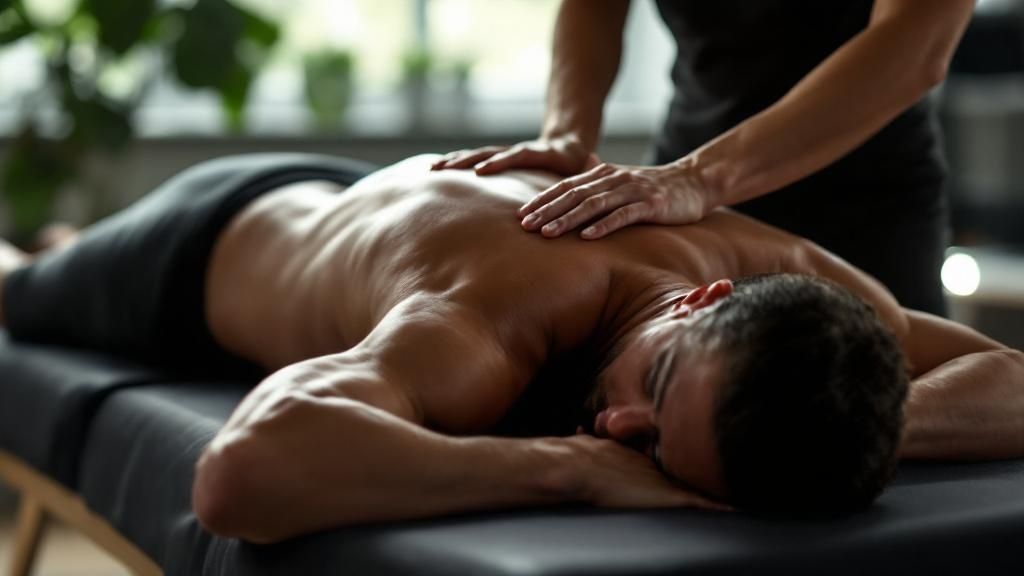
This image from Wikipedia shows how different sports massage techniques can be used to work on specific muscle groups. It really highlights the precision of sports massage therapy. It’s tailored to each athlete’s individual needs and the demands of their sport. Instead of a one-size-fits-all approach, it’s more like a targeted strategy to improve performance and recovery. It’s about so much more than just easing general muscle soreness.
Think of a sports massage therapist as a specialized performance engineer for your body. They understand the intricate workings of your muscles under stress and know how to fine-tune them for optimal function. This is a world away from a relaxing spa massage. Sports massage therapy goes much deeper, addressing the specific needs of everyone from professional athletes to weekend warriors.
Why Professional Athletes Rely on Sports Massage Therapy
Professional athletes are as dedicated to their sports massage sessions as they are to their training. It’s not a luxury; it’s a core part of their overall performance strategy. Why? Sports massage therapy helps them recover faster, become more flexible, and lower their risk of injury. This means they can train harder, recover more efficiently, and stay at the top of their game.
For instance, a runner might need sports massage therapy focused on their legs and glutes to deal with the constant strain of running, whereas a swimmer might benefit from work on their shoulders and back. This targeted approach is what makes sports massage therapy so effective for dealing with the specific demands placed on an athlete’s body. Plus, regular sports massage therapy can improve an athlete’s range of motion, leading to increased agility and power.
Benefits Extend Beyond the Physical
The advantages of sports massage therapy aren’t just physical. Studies show that massage therapy can significantly impact mental well-being by reducing stress and lifting mood. In fact, the 2024 Massage Profession Research Report found that 61% of people use massage therapy mainly for medical benefits like pain relief, while 56% use it for mental health benefits like stress reduction. This makes sports massage therapy a great tool for handling the mental pressures of competition, too. Learn more about the benefits of massage therapy here.
Strategic Application for Peak Performance
Sports massage therapists use a range of specialized techniques to meet specific athletic needs. Pre-competition massage can prepare the nervous system for optimal performance, while post-workout massage speeds up recovery. During training, regular maintenance sessions can prevent small problems from becoming serious injuries. This strategic use of different techniques throughout an athlete’s training and competition cycle shows the depth and complexity of sports massage therapy. This planned and focused approach sets it apart from a casual massage, making it a vital tool for any serious athlete.
The Athletic Recovery Science: How Your Body Actually Rebuilds
Imagine your muscle fibers are like tiny, tightly wound springs. During a tough workout, these springs are constantly stretching, compressing, and sometimes even tearing microscopically. This is the unseen world of muscle exertion, and sports massage therapy helps your body bounce back faster.
This isn’t just about making your muscles feel less sore; it’s about actively supporting the physiological processes involved in recovery. Sports massage works by influencing blood flow, lymphatic drainage, and how your nervous system handles recovery signals. It’s like fine-tuning your body’s internal repair crew.
The Role of Blood Flow and Lymphatic Drainage
Blood flow, stimulated by massage, is like a delivery service bringing oxygen and nutrients to the “construction site” of your damaged muscle tissue. These resources are essential for repair and rebuilding. At the same time, efficient lymphatic drainage acts as the waste removal service, clearing out metabolic byproducts (the “debris” from exertion) that can slow down the recovery process.
For instance, after a hard run, lactic acid accumulates in your muscles, causing soreness and fatigue. Sports massage helps flush out this lactic acid, allowing your muscles to recover more quickly. This is why a post-workout massage can feel so incredibly relieving, reducing stiffness and getting you back on your feet sooner.
The Nervous System Connection
Sports massage also has a profound impact on your nervous system, affecting both pain perception and relaxation. Specific techniques can dampen pain signals, offering relief from discomfort. Massage also triggers the release of endorphins, your body’s natural painkillers, further enhancing pain management and boosting your overall well-being. It’s like calming the internal alarm system so your body can concentrate on healing.
This explains the critical difference between a pre-event massage and a post-workout massage. Pre-event massage primes your nervous system for optimal performance, while post-workout massage prioritizes recovery and repair. Each approach targets different healing pathways, demonstrating the importance of timing when integrating massage into your training plan.
Let’s take a look at how sports massage stacks up against other recovery methods:
To illustrate the various approaches athletes can take for recovery, and how they compare to sports massage, the following table provides a helpful overview:
Sports Massage vs. Recovery Methods Comparison
Comparing effectiveness, time requirements, and benefits of different athletic recovery approaches
| Recovery Method | Time Required | Primary Benefits | Best Used When | Effectiveness Rating (1-5, 5 being highest) |
|---|---|---|---|---|
| Sports Massage | 30-90 minutes | Reduced muscle soreness, improved flexibility, enhanced recovery | Post-workout, pre-event, injury rehabilitation | 5 |
| Active Recovery (light exercise) | 20-30 minutes | Improved blood flow, reduced stiffness | Post-workout, rest days | 4 |
| Foam Rolling | 10-15 minutes | Myofascial release, improved flexibility | Pre-workout, post-workout | 3 |
| Cold Water Immersion | 5-10 minutes | Reduced inflammation, muscle soreness | Post-workout, intense training periods | 4 |
| Compression Garments | Variable | Improved blood flow, reduced muscle swelling | Post-workout, during travel | 3 |
| Rest | Variable | Allows body to naturally repair and rebuild | Essential for all recovery strategies | 5 |
| Nutrition (protein, carbohydrates) | Ongoing | Fuels muscle repair and growth | Essential for all recovery strategies | 5 |
| Hydration | Ongoing | Maintains optimal physiological function | Essential for all recovery strategies | 5 |
As this table highlights, sports massage offers a potent combination of benefits, specifically targeting muscle recovery and flexibility. While other methods play important roles, massage provides a more focused approach to addressing muscle-specific issues and promoting overall recovery. Understanding these different approaches empowers you to create a well-rounded recovery plan that meets your specific needs and goals.
Mastering Essential Sports Massage Techniques
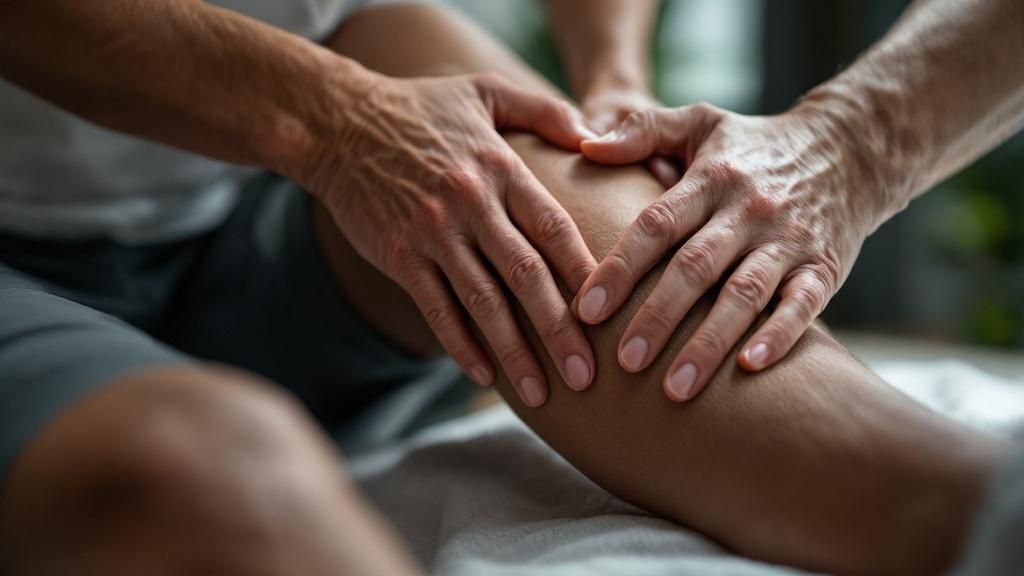
Let’s explore the hands-on techniques that truly set sports massage therapy apart. Think of it like this: every technique has a specific purpose, just like a skilled carpenter chooses the right tool for the job. We’ll begin with the fundamental techniques, borrowed from Swedish massage, and then move into the specialized methods that give sports massage its unique power.
Foundational Swedish Massage Techniques
Many sports massage approaches have their roots in Swedish massage techniques. Effleurage, using long, flowing strokes, is like warming up the engine of a car—it preps the muscles and gets the blood circulating.
Then we have petrissage, a kneading and lifting technique. Imagine gently squeezing a stress ball – that’s petrissage working to improve blood flow, loosen tight muscles, and encourage lymphatic drainage.
Finally, there’s tapotement, a rhythmic tapping or percussion. This technique acts like a gentle wake-up call for the muscles and nervous system, stimulating and invigorating them.
Advanced Sports Massage Techniques
Building on this foundation, sports massage incorporates more specialized techniques. Deep tissue massage, as the name implies, works on the deeper layers of muscle and connective tissue. It’s like carefully untangling stubborn knots in a rope, addressing chronic tension and adhesions often caused by repetitive strain or injury.
This area of sports massage is increasingly popular, driven partly by the growing number of sports and athletic programs, particularly among younger athletes. The demand for improved performance and quicker recovery has made massage an essential tool. Even teenagers are turning to massage before competitions to improve agility and soothe their muscles. Learn more about this growing trend here.
Trigger point therapy is another key technique, a precise method focusing on those pesky “knots” or hyper-irritable spots within muscles. Think of it like finding and releasing a pinched nerve that’s causing pain elsewhere in the body—trigger points can refer pain to other areas.
Myofascial release works on the fascia, the connective tissue that wraps around our muscles. This technique uses sustained pressure to release restrictions in the fascia, much like smoothing out wrinkles in a tightly pulled sheet. The result is improved mobility and pain relief.
Combining Techniques for a Customized Approach
Expert sports massage therapists don’t simply use these techniques individually. Instead, they skillfully blend them, creating personalized treatment plans that address individual needs and athletic goals.
For example, a pre-event massage might concentrate on effleurage and gentle petrissage to warm up muscles and improve blood flow. A post-event massage, on the other hand, might focus on deep tissue work and trigger point therapy to alleviate muscle soreness and inflammation.
This customized, tailored approach is what makes sports massage therapy so effective. It’s not a one-size-fits-all approach, but a unique strategy designed for each individual’s physical well-being and performance goals.
Strategic Timing: When Sports Massage Therapy Works Best
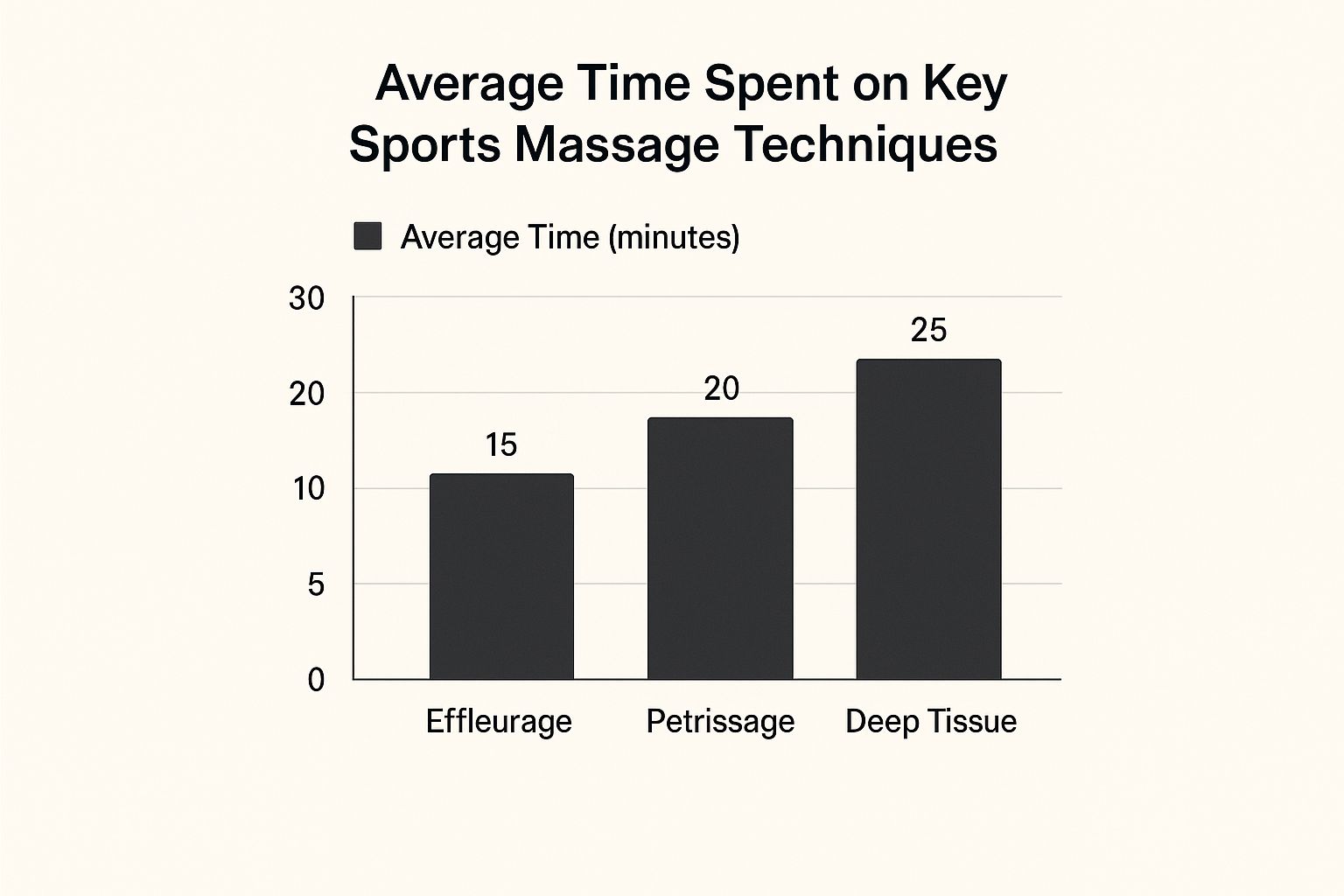
The infographic above gives us a snapshot of how a therapist typically divides their time between different sports massage techniques. Notice how deep tissue work often takes the longest, followed by petrissage, then effleurage. This highlights a key point: sports massage isn’t a one-size-fits-all approach. The therapist adjusts the time spent on each technique based on the athlete’s individual needs and the specific type of massage.
Timing plays a crucial role in getting the most out of sports massage therapy. Think of it like nutrition: you wouldn’t eat a heavy meal right before a big race. Similarly, the timing of your massage has a big impact on its effectiveness. Let’s explore how the timing of sports massage can be adjusted for different stages of training and competition.
Pre-Event Preparation: Priming for Peak Performance
Imagine a pre-event massage as a warm-up, not for your muscles, but for your nervous system. Given a few days or even just hours before competition, this type of massage aims to boost performance rather than induce deep relaxation. The goal is to increase blood flow, loosen tight muscles, and improve range of motion, essentially prepping the body for optimal performance. Lighter techniques, like effleurage and gentle petrissage, are typically used in pre-event massage.
A pre-event massage is like giving your body a pep talk before the big game, ensuring everything is running smoothly and ready to go.
Post-Workout Recovery: Accelerating the Healing Process
After a tough workout or competition, sports massage shifts gears to focus on recovery. This is where techniques like deep tissue massage, trigger point therapy, and myofascial release come into play. These methods target muscle soreness, help flush out metabolic waste products like lactic acid, and encourage tissue repair. Post-workout massage can be especially helpful in reducing inflammation and preventing that dreaded delayed-onset muscle soreness (DOMS), allowing athletes to bounce back faster and return to training sooner.
Think of it as a reset button for your muscles, helping them recover and rebuild after being pushed to their limits.
Maintenance Sessions: Preventing Problems Before They Start
Regular maintenance massages during training periods are like routine check-ups for a high-performance machine (your body!). These sessions address minor muscle imbalances, improve flexibility, and prevent small niggles from developing into major injuries. It’s a proactive approach to keeping your body in top shape throughout your training cycle. The frequency and intensity of these sessions can be adapted based on your training load and individual needs.
Just as a car needs regular tune-ups to run smoothly, regular maintenance massages keep your body in peak condition.
To help visualize the optimal timing for various massage types, let’s look at a handy guide:
To provide a more practical understanding of timing your sports massage effectively, let’s consult a quick reference guide:
Optimal Sports Massage Timing Guide
Strategic timing recommendations for different types of athletic activities and training phases.
| Training Phase | Massage Type | Optimal Timing | Session Duration | Primary Goals |
|---|---|---|---|---|
| Pre-Competition | Pre-event | 1-3 days or a few hours before | 30-60 minutes | Enhance performance, reduce tension, improve range of motion |
| Post-Competition | Post-event/Recovery | Immediately after or within 24-48 hours | 60-90 minutes | Reduce soreness, flush out lactic acid, promote tissue repair |
| Active Training | Maintenance | 1-2 times per week | 60-90 minutes | Address muscle imbalances, improve flexibility, injury prevention |
| Off-Season/Light Training | Recovery/Relaxation | 1-2 times per month | 30-60 minutes | Maintain flexibility, promote relaxation |
This table outlines general guidelines. Remember, a personalized approach is always best.
This table provides a general overview; remember that individual needs vary. Consult with your therapist and coach for personalized guidance.
Reading Your Body’s Signals: Knowing When to Adjust
Paying attention to your body’s cues is essential for maximizing the benefits of sports massage. Ongoing muscle soreness, limited range of motion, or unusual fatigue can all signal that you might need a massage. Communicating these signs to your therapist is key. Open communication allows them to tailor each session to your specific needs, ensuring you receive the right type of massage at the optimal time.
Think of your therapist as a detective, working with you to decipher your body’s clues and provide the most effective treatment.
Frequency and Intensity: Adapting to Your Needs
The ideal frequency and intensity of sports massage depend on several things: your training volume, competition schedule, and how quickly you recover. During periods of intense training, more frequent sessions might be beneficial. Conversely, lighter training or the off-season may only require less frequent maintenance massages. Collaborating with your therapist and coach to create a personalized massage schedule that complements your training and supports your performance goals is key. This ensures that sports massage is a strategic component of your overall athletic plan.
Just as a training plan needs adjustments, so does your massage schedule. Working with your team creates a holistic approach to achieving your athletic goals.
Maximizing Your Session: Smart Preparation Strategies
Getting the most from sports massage therapy isn’t just about the session itself. It’s about the groundwork you lay beforehand. Think of a successful sports massage like a well-executed play – proper preparation is the pre-game strategy that sets you up for a win.
Hydration: Fueling Your Body’s Response
Hydration plays a vital role. Well-hydrated muscles respond better to massage, like fertile ground accepting seeds. Proper hydration helps flush out metabolic waste products that massage releases. Drink plenty of water in the hours leading up to your appointment.
Communication: Guiding Your Therapist
Talk to your therapist! It’s like giving your mechanic a detailed description of your car’s issues. The more information they have, the better they can address the specific problem. Discuss pain points, training routines, and any past injuries.
Assessing Your Physical State: Understanding Your Starting Point
Before your session, take stock of your body. Where are you feeling tight? What’s your range of motion like? This is your personal pre-game warm-up, helping you understand your starting point and target specific needs with your therapist.
Mental Preparation: Setting the Stage
Just as athletes visualize a successful performance, take a few moments to relax and clear your head before your massage. Visualize the session and the relief it will bring. This mental preparation primes your body for relaxation and allows you to fully benefit from the therapy.
Practical Considerations: What to Wear and When to Eat
Wear comfortable, loose clothing that allows easy access to the areas being treated. Avoid a heavy meal right before your massage. A light snack is fine, but a full stomach can make the experience less comfortable.
Training Adjustments: Maximizing Massage Benefits
Think of massage as part of your training regimen, not separate from it. Avoid intense workouts immediately before or after your session. Give your body time to respond to the massage and reap the full rewards. This integrated approach maximizes both your performance and recovery.
By following these preparation strategies, you’re not just showing up for a sports massage – you’re actively engaging in your recovery and performance journey. You’re turning a good session into a truly great one.
The Booming Sports Massage Industry: What This Means For You
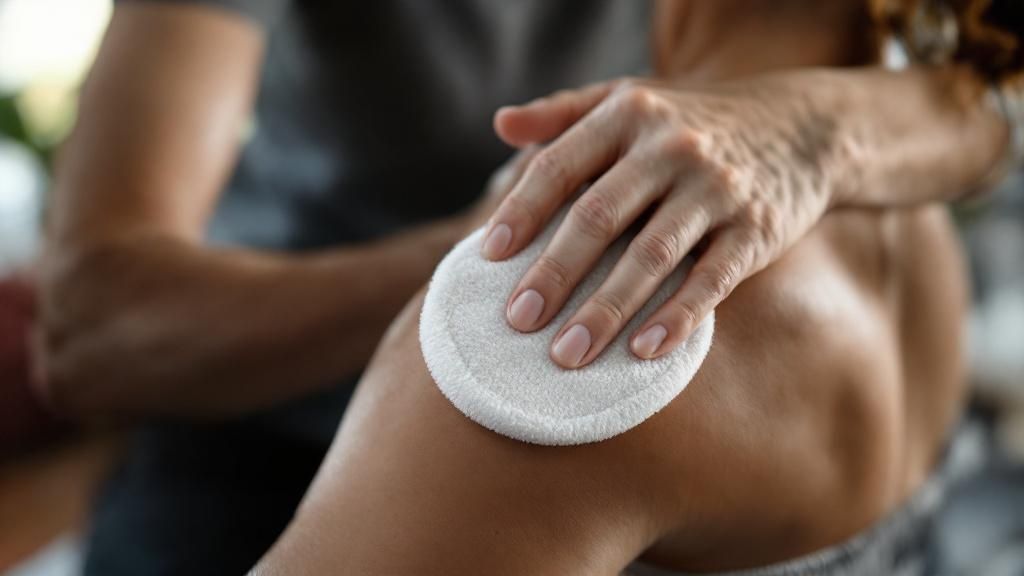
The wellness industry is a constantly shifting landscape. Within this dynamic environment, sports massage therapy has carved out its own unique and increasingly popular niche. Think of it as a bridge between peak performance and staying off the injured list, making it a highly sought-after service for athletes at every level. This growing demand has naturally led to a surge in the sports massage industry. But what does this mean for you as an athlete looking for optimal performance and recovery?
Driving Forces Behind Industry Growth
Several factors contribute to the rise of sports massage therapy. A greater awareness of holistic health practices plays a key role. People are increasingly looking beyond traditional medicine and exploring complementary therapies like massage to enhance their overall well-being. It’s like adding another tool to your toolkit.
Another factor is the integration of sports massage into mainstream sports medicine. Doctors, physical therapists, and athletic trainers now recognize the value of sports massage for injury prevention, rehabilitation, and getting the most out of an athlete’s performance. This professional endorsement gives sports massage greater legitimacy within the athletic community.
Corporate wellness programs are also getting in on the action. Companies are realizing that healthier employees are more productive and engaged. Offering on-site or subsidized massage services, including sports massage, contributes to employee well-being and can even lower healthcare costs. It’s a win-win.
Finally, the expansion of mobile massage services has made a big impact. These services are tailored to our busy schedules, bringing sports massage directly to athletes wherever they are – at home, at the office, or even at the training facility. This convenience makes it easier than ever to fit massage into a demanding training routine.
Benefits for You: Quality, Innovation, and Access
This growth in the sports massage industry has real benefits for athletes. The expansion leads to a higher quality of service overall. Increased competition encourages therapists to specialize, gain advanced certifications, and hone their skills. This leads to more effective, individualized treatment plans.
The growing demand also fuels innovation in treatments. New techniques, tools, and technologies are constantly being developed, offering more targeted and effective approaches to performance enhancement and injury recovery. It’s a constantly evolving field.
Perhaps most importantly, this expanding market makes sports massage more accessible at different price points. Greater competition can mean more affordable options, making these services available to a broader range of athletes, from weekend warriors to elite professionals.
The global massage therapy service market is projected to reach $72.5 billion by 2025, growing at a rate of 5.8% annually from 2025 to 2035. In key markets like the USA, growth is even faster, estimated at 7.5%. This is driven by greater consumer awareness of wellness and the rising popularity of corporate wellness initiatives. You can find more about this market growth here.
By understanding the dynamics of this growing industry, you can make informed decisions about how sports massage therapy fits into your overall performance and wellness goals. It empowers you to explore your options and choose the best approach for achieving your athletic ambitions.
Key Takeaways: Your Sports Massage Therapy Action Plan
Let’s turn our discussion into a practical plan for adding sports massage therapy to your training. Think of this as your personal roadmap, a set of clear steps to guide you, whether you’re new to massage or a seasoned athlete.
Finding the Right Therapist: Your Partner in Recovery
Choosing the right sports massage therapist is like choosing the right coach. You need someone who understands your individual needs and goals. Look for therapists with a background in sports massage and certifications related to your sport. If you’re a swimmer, for example, a therapist familiar with swimmer-specific movements will be a great asset.
Don’t be afraid to ask questions during your first consultation. A good therapist encourages open communication and will create a treatment plan with your input. This teamwork sets the foundation for a strong therapist-athlete relationship.
Setting Expectations: What to Expect From Your First Sessions
Your first few sports massage therapy sessions might feel different from a relaxing spa massage. You may feel some discomfort, especially if the therapist is working on deep tissue or trigger points. This is often normal and indicates the therapist is addressing underlying muscle tension.
Talk to your therapist throughout the session. Tell them if the pressure is too much or if you feel any pain. This feedback helps the therapist adjust the treatment to ensure your comfort. Remember, you’re working together.
Measuring Success: Tracking Progress and Benefits
How can you tell if sports massage therapy is making a difference? Pay attention to improvements in your flexibility, range of motion, and recovery time. Are you less sore after workouts? Can you train harder without feeling as tired? These are important signs of progress.
Keep a training log to track your workouts and how your body responds. Write down any changes in your performance, recovery, and how you feel overall. This helps you see the real impact of sports massage therapy on your athletic goals.
Addressing Concerns: Troubleshooting and Maximizing Results
If you’re not seeing the results you want, don’t be discouraged. Talk to your therapist about adjusting the treatment plan. Sometimes it takes a few sessions to find the right techniques and how often you need treatment. Think of it as fine-tuning your car for the best performance.
Think about other lifestyle choices that can affect your recovery too. Are you getting enough sleep? Is your diet supporting your training? How are you managing stress? All these things influence your overall well-being and athletic performance.
From booking your first sports massage therapy session to developing a routine, these steps can help transform your recovery and maximize your potential.
Ready to Rejuvenate Your Mind and Body?
Experience the positive effects of sports massage therapy at La Moon Massage and Facial in Houston, Texas. We offer tailored treatments designed to help you relax, recover, and reach your athletic goals. Book your appointment today and discover the La Moon difference: https://www.lamoondayspa.com
